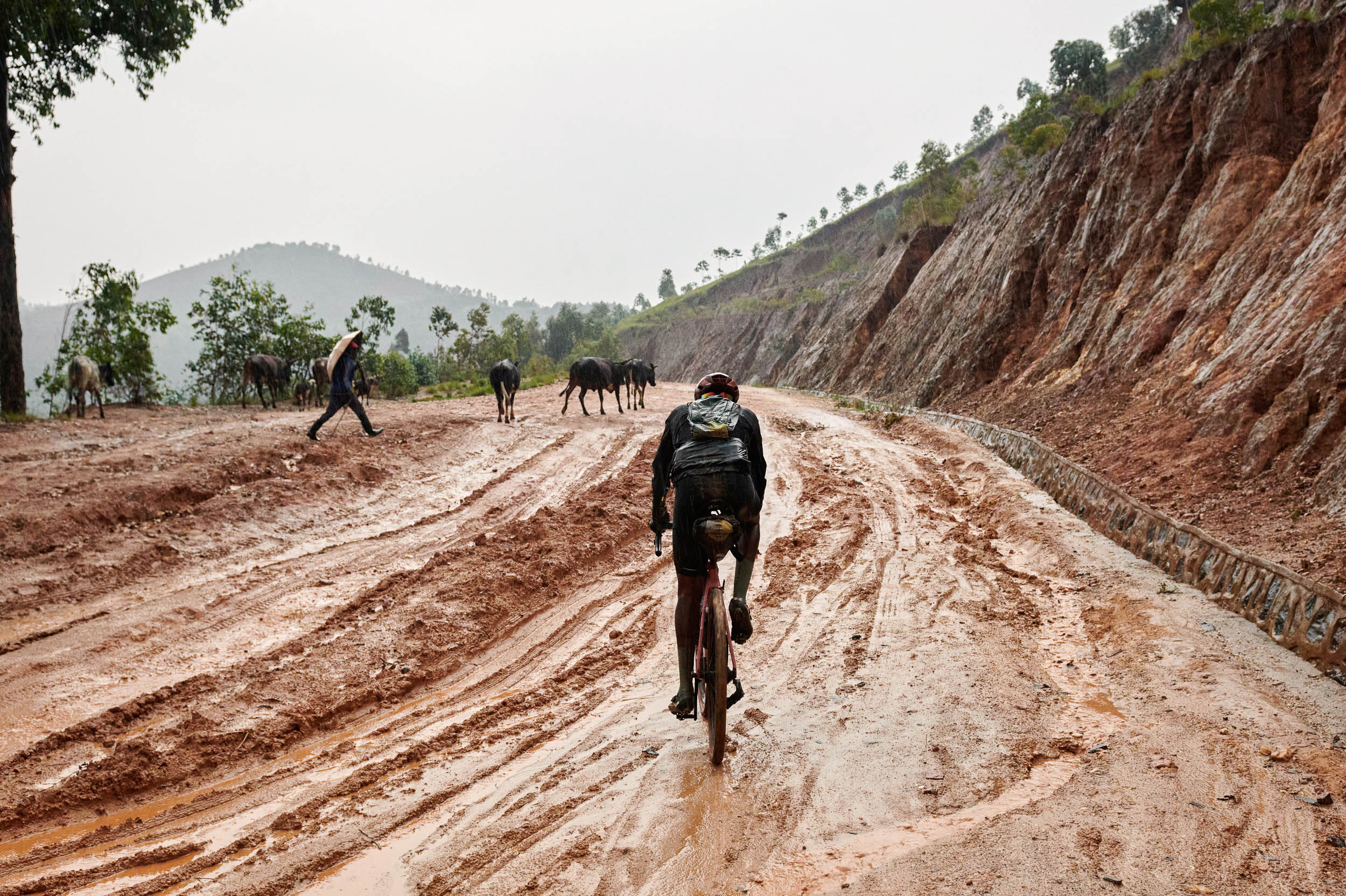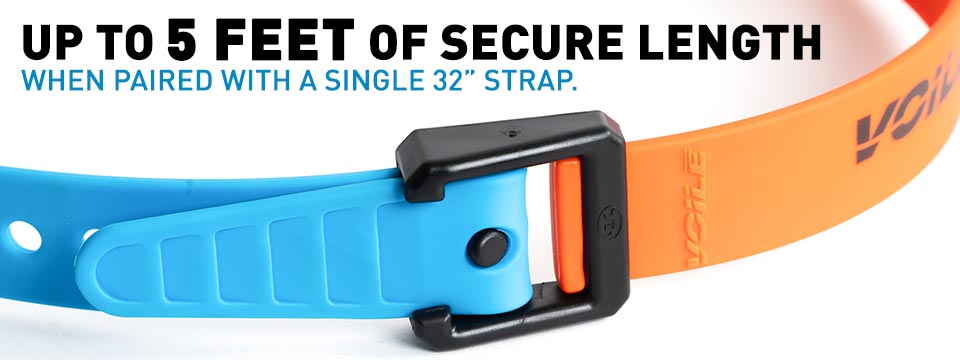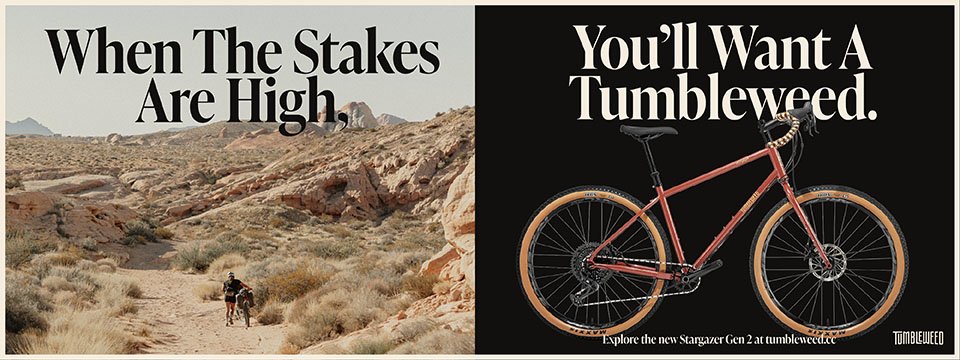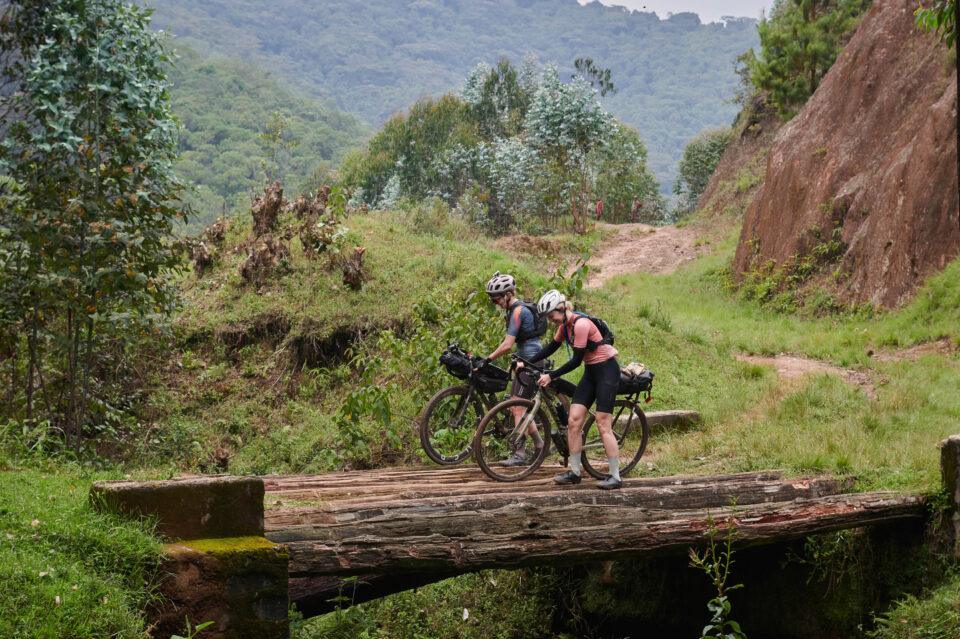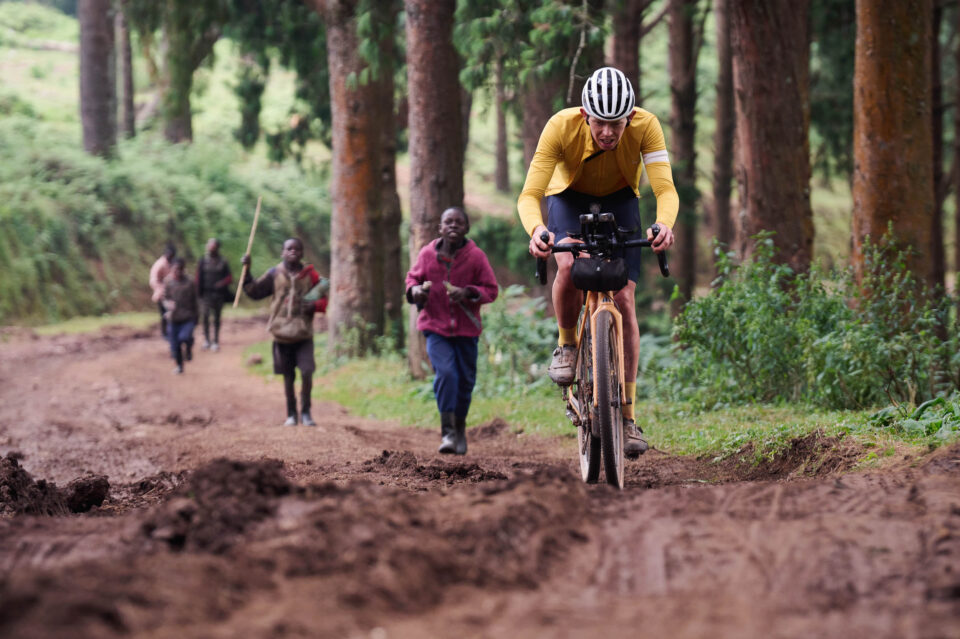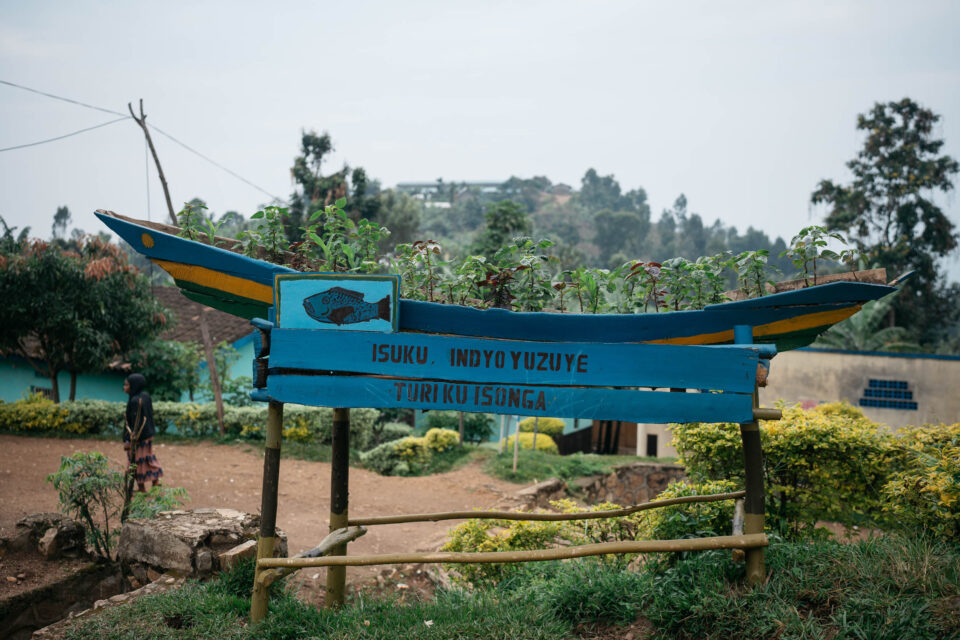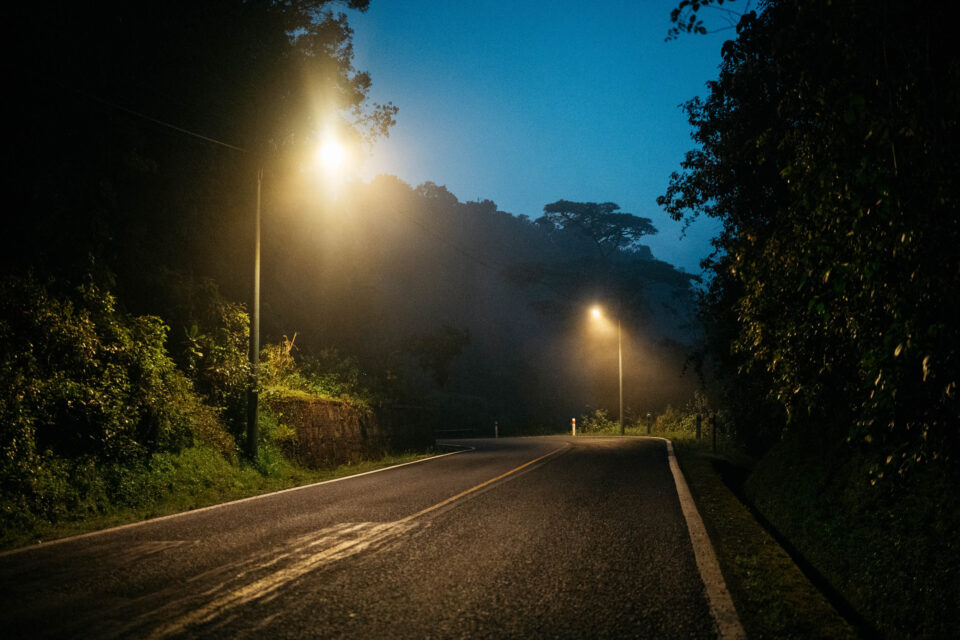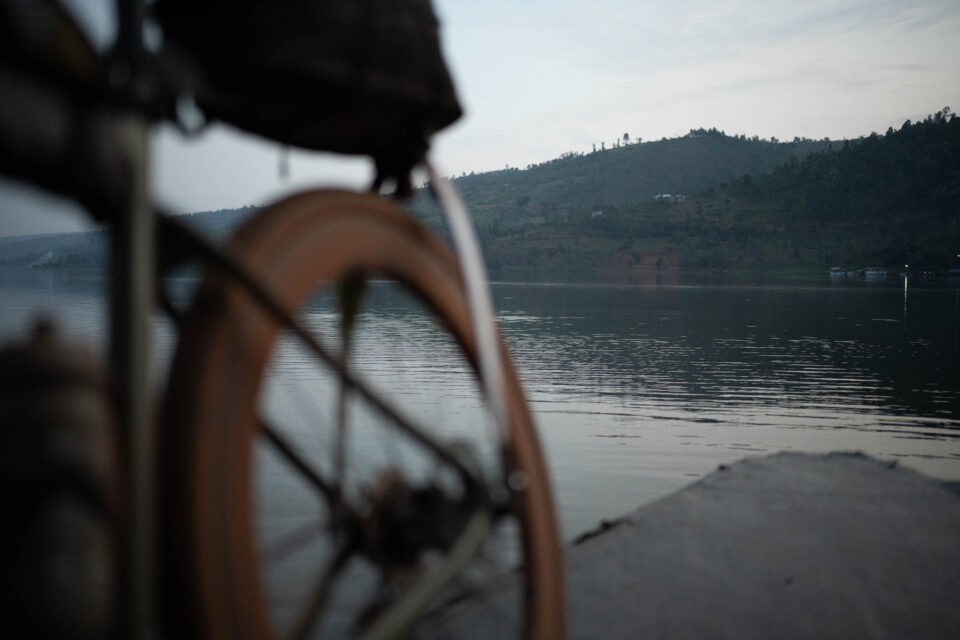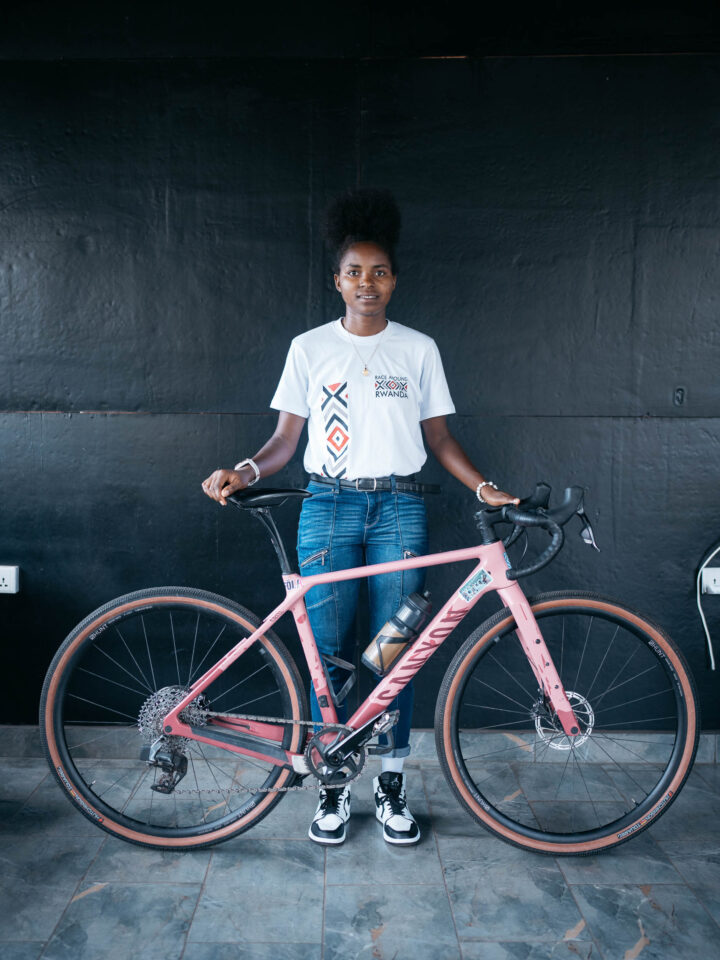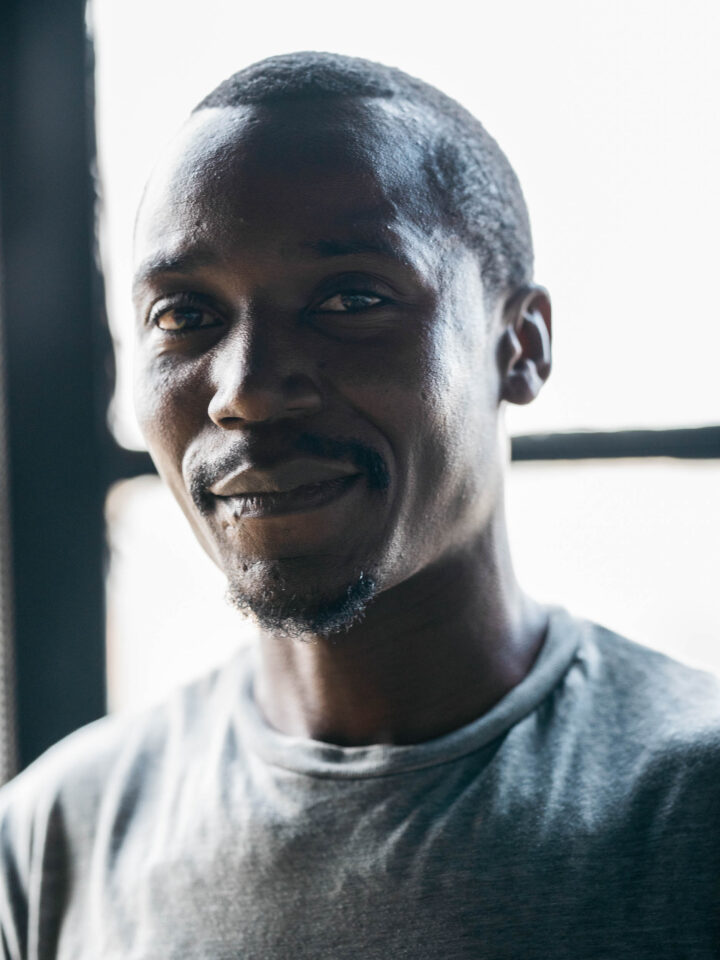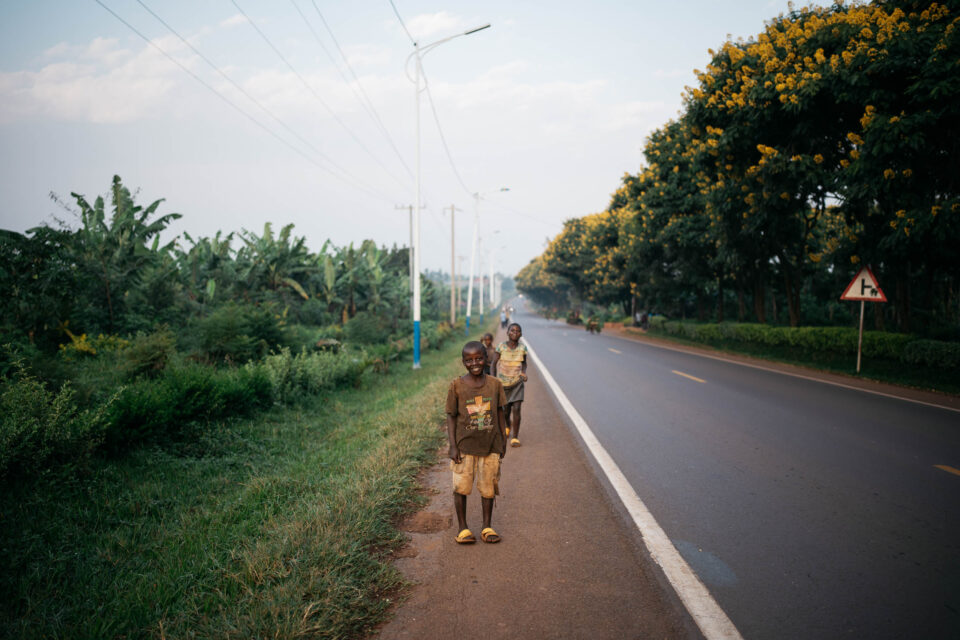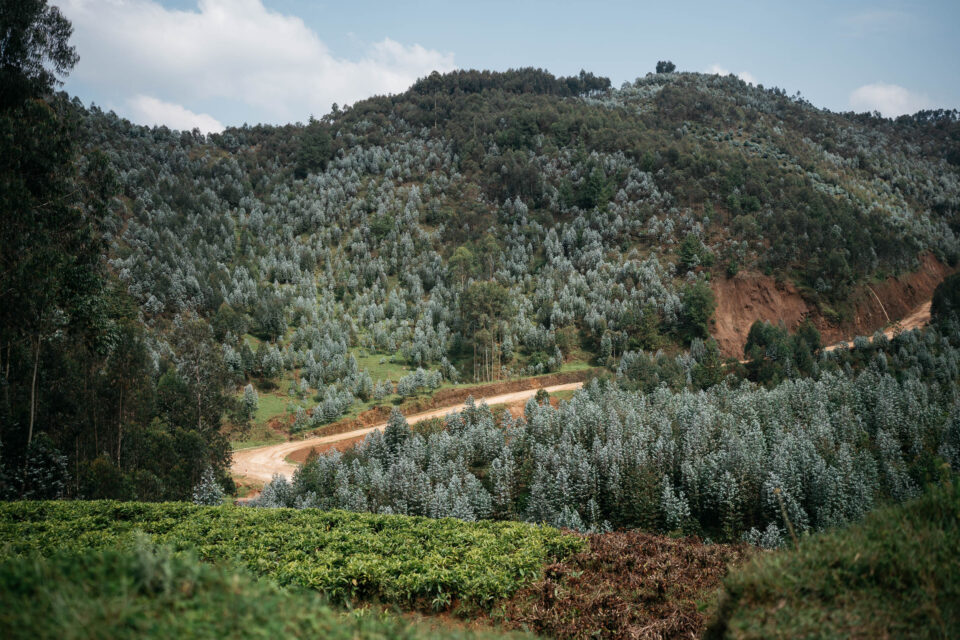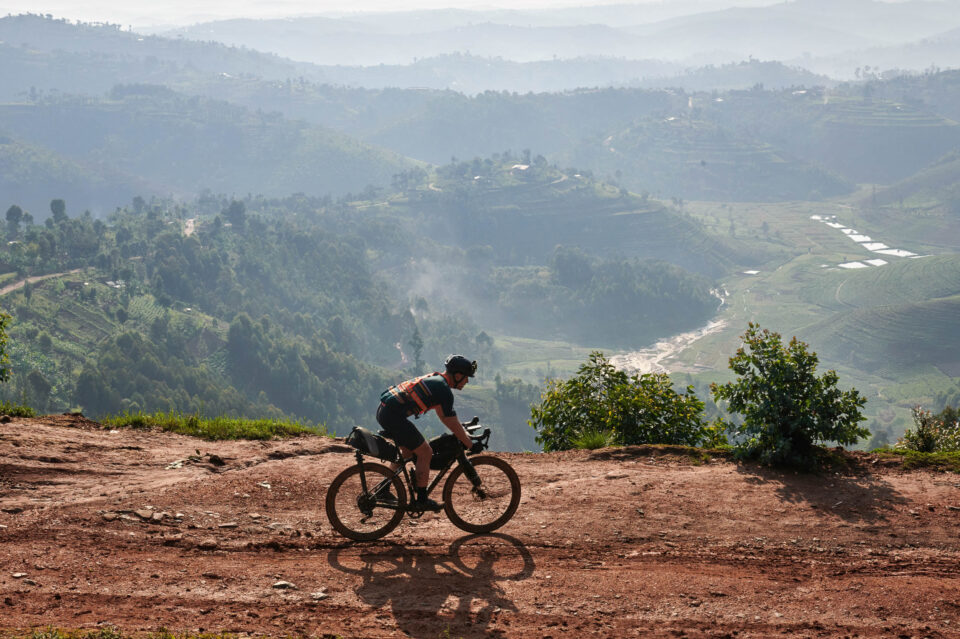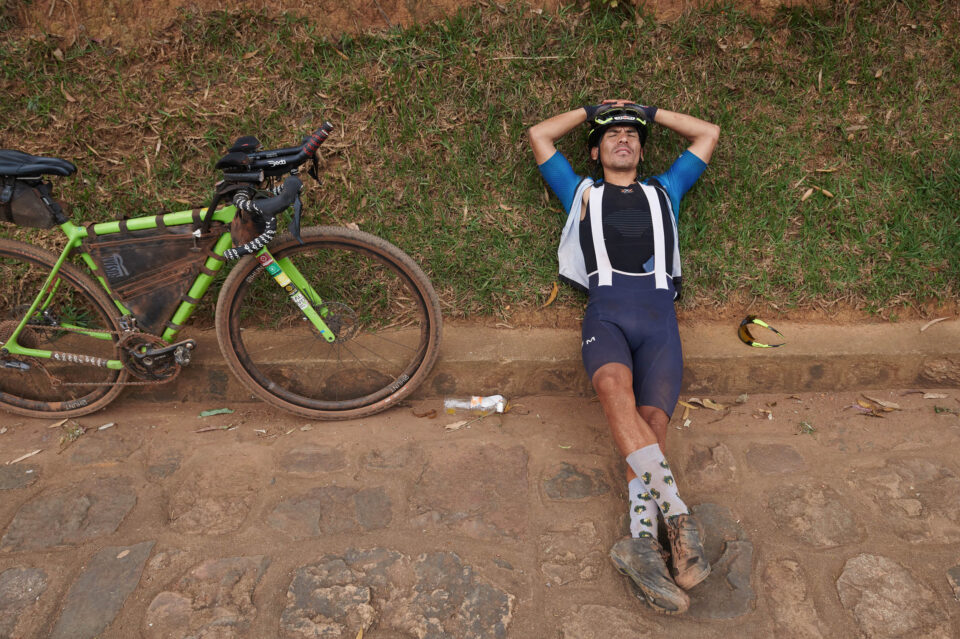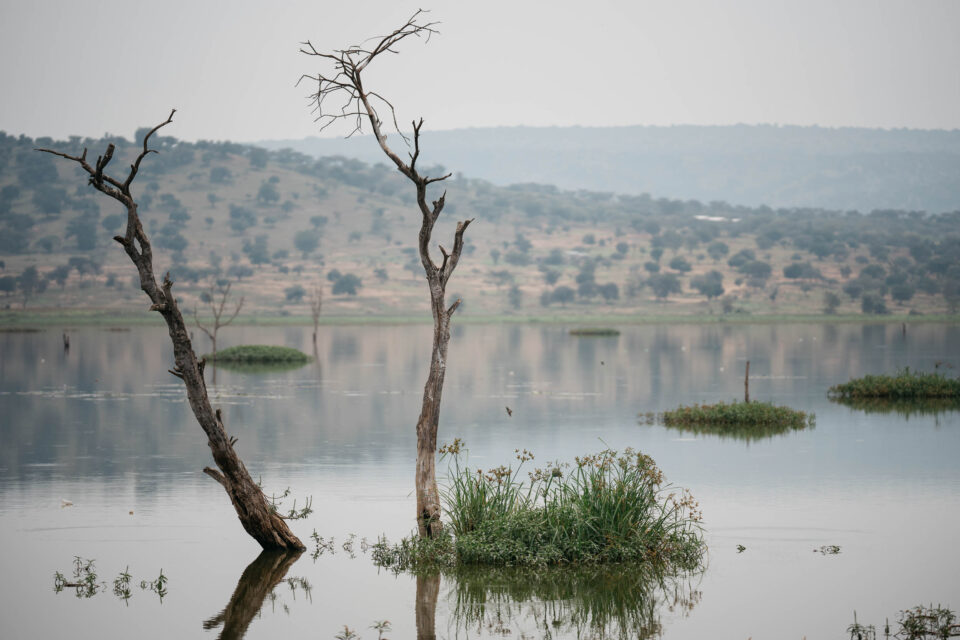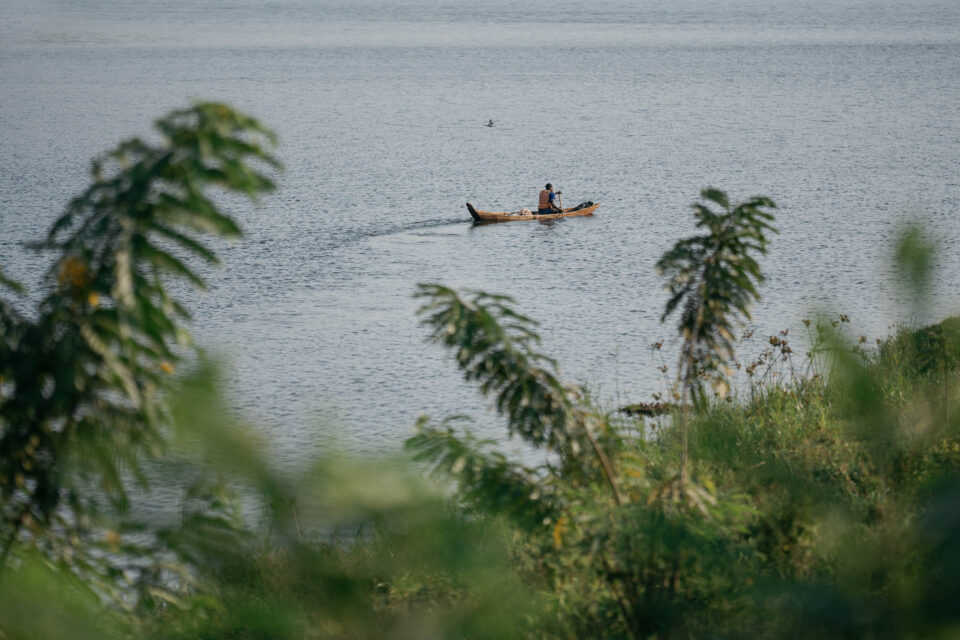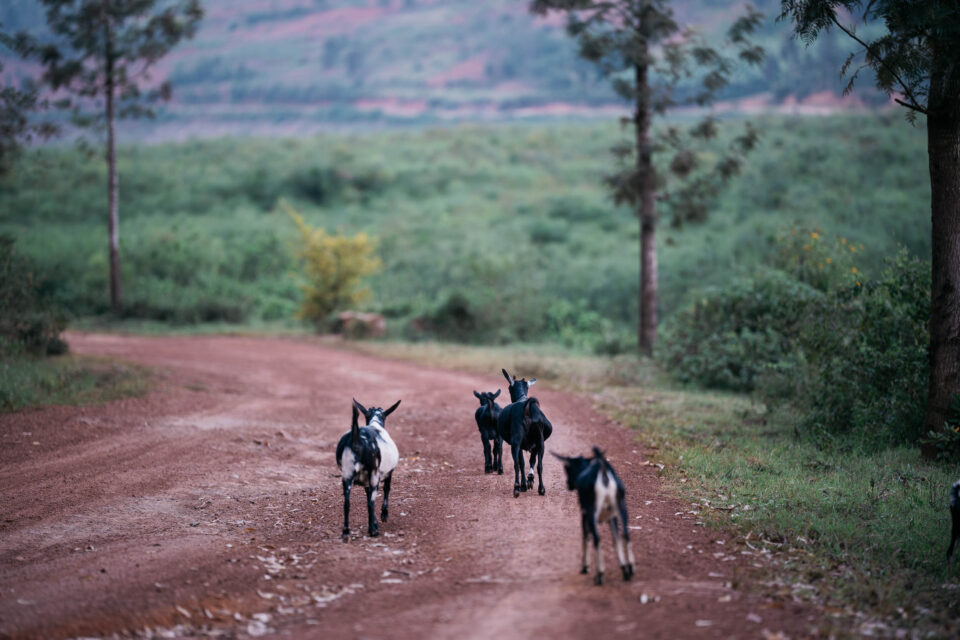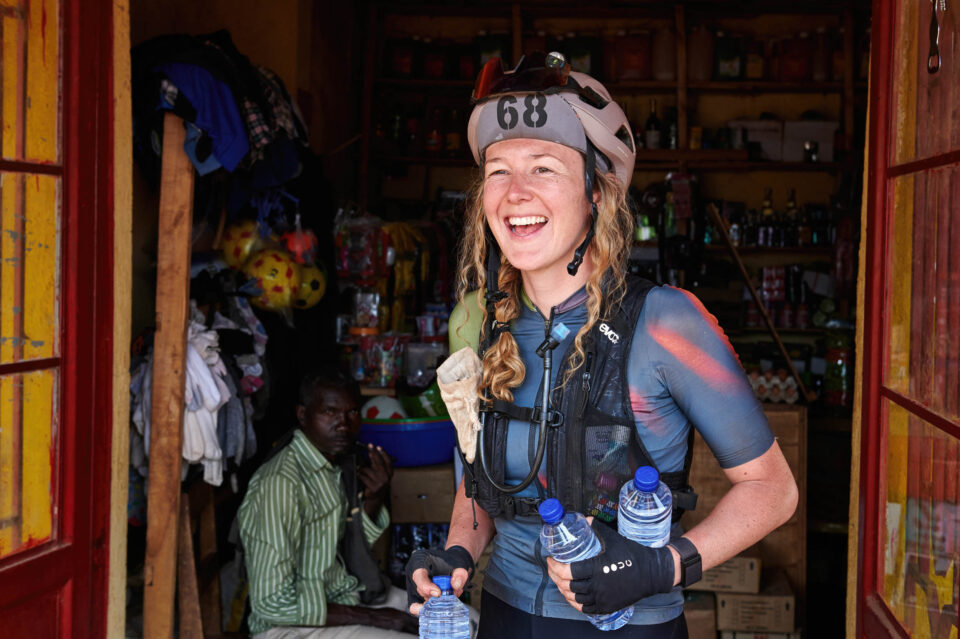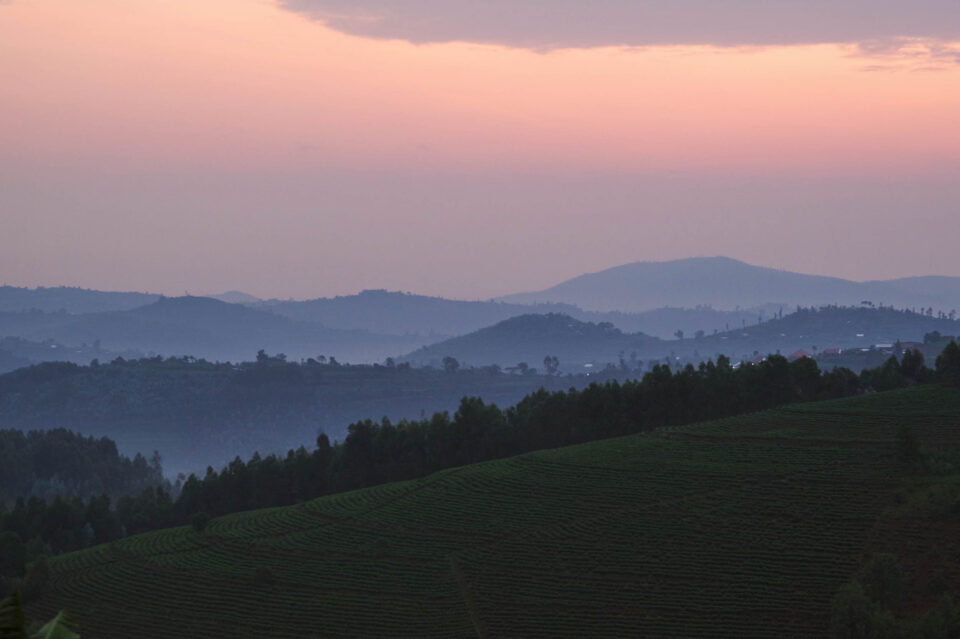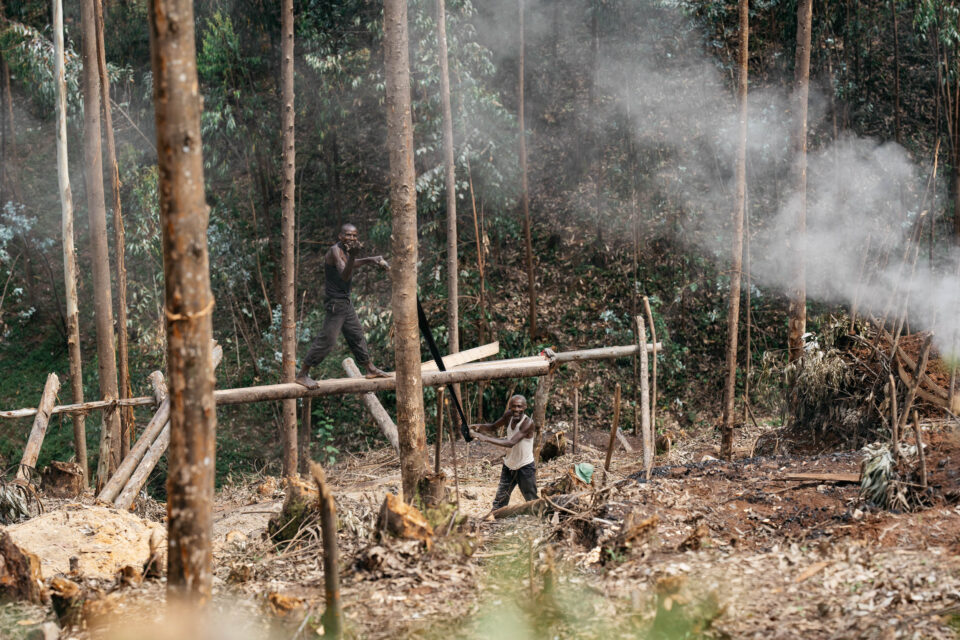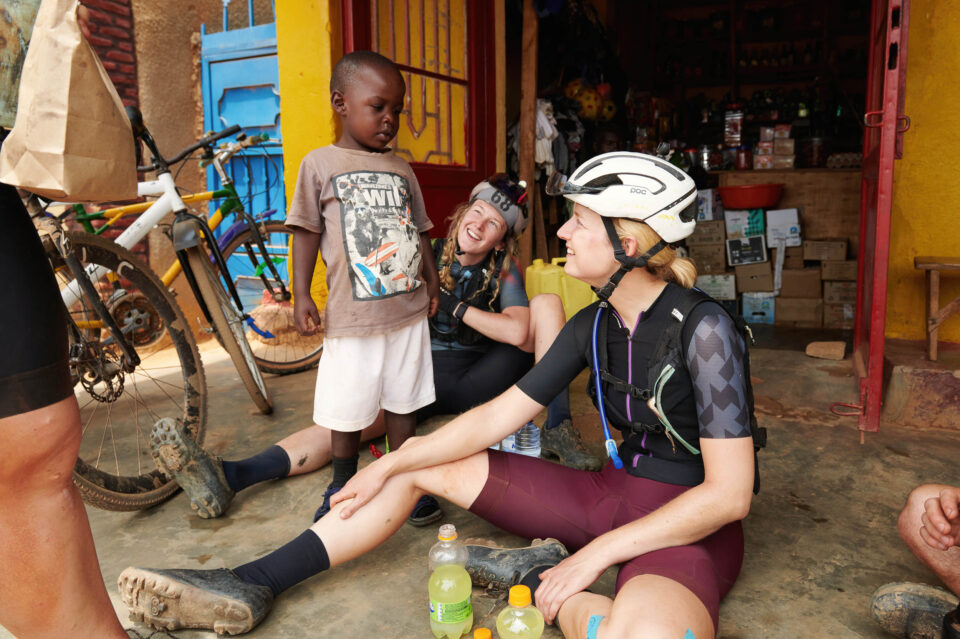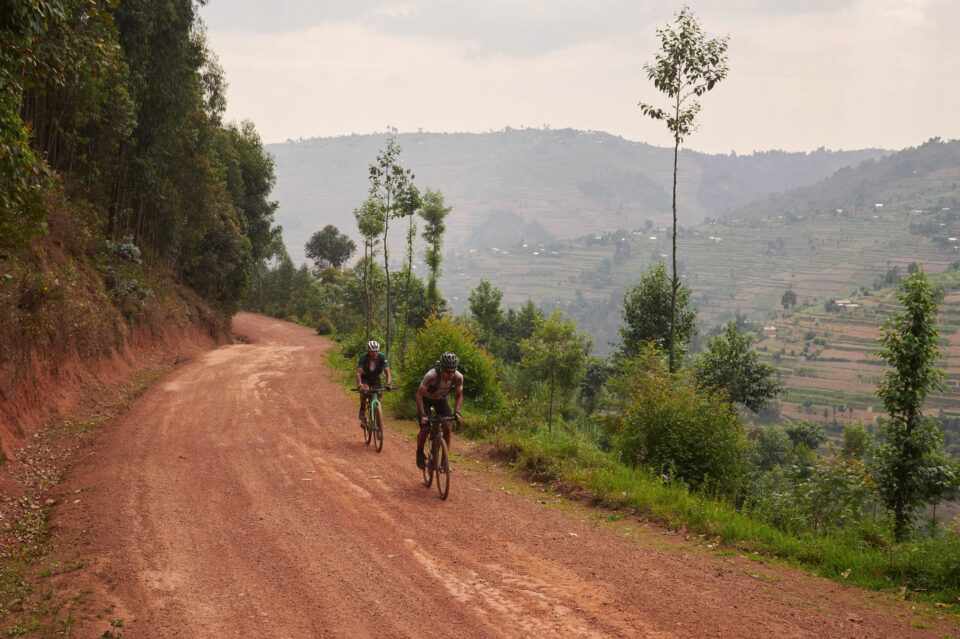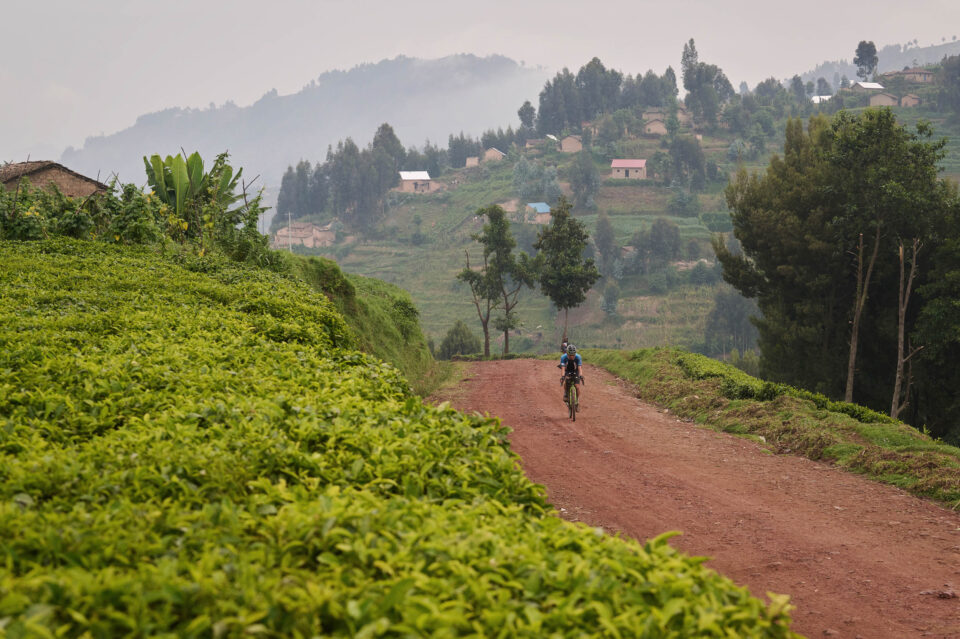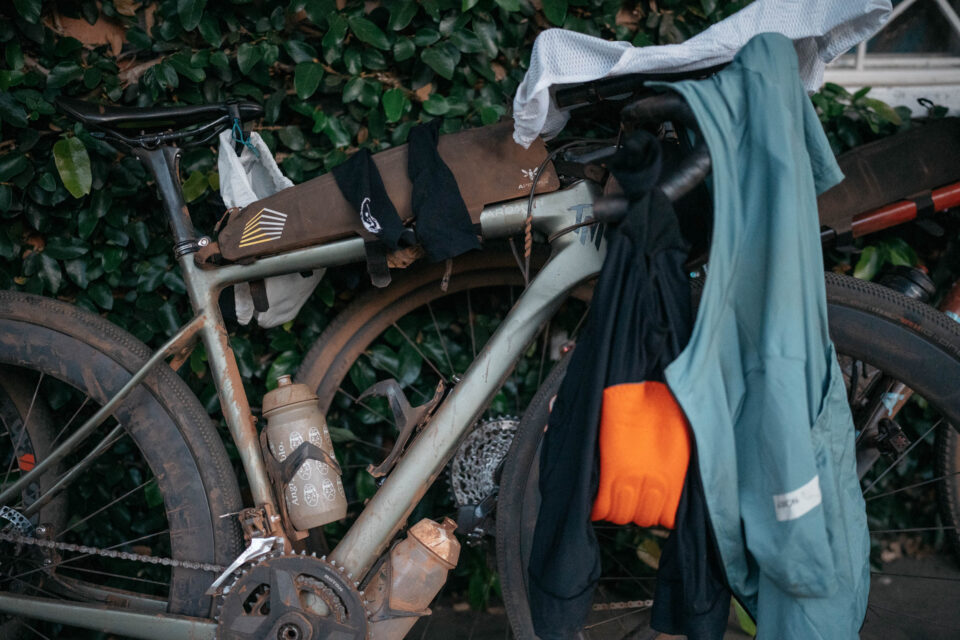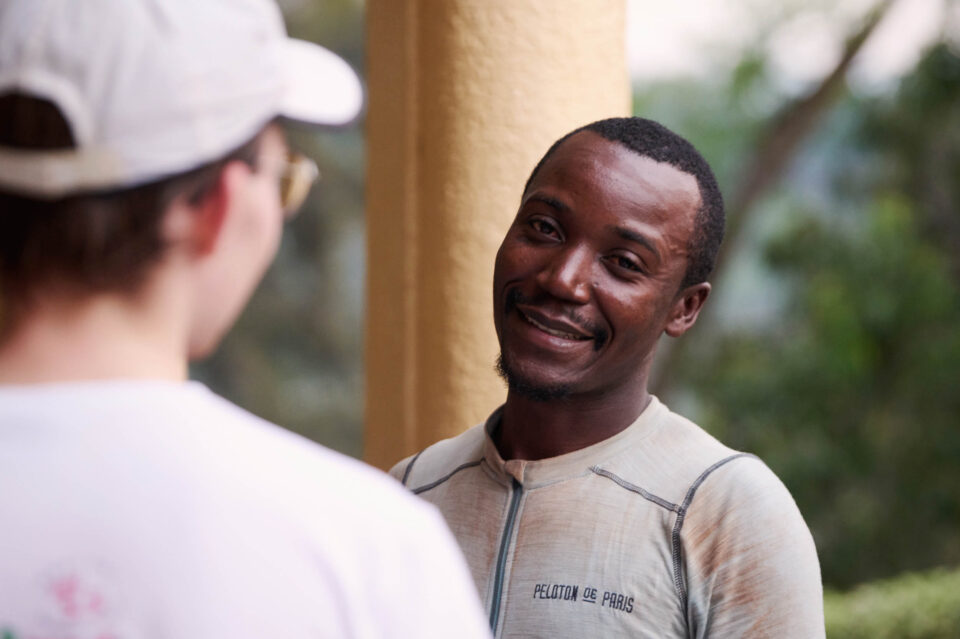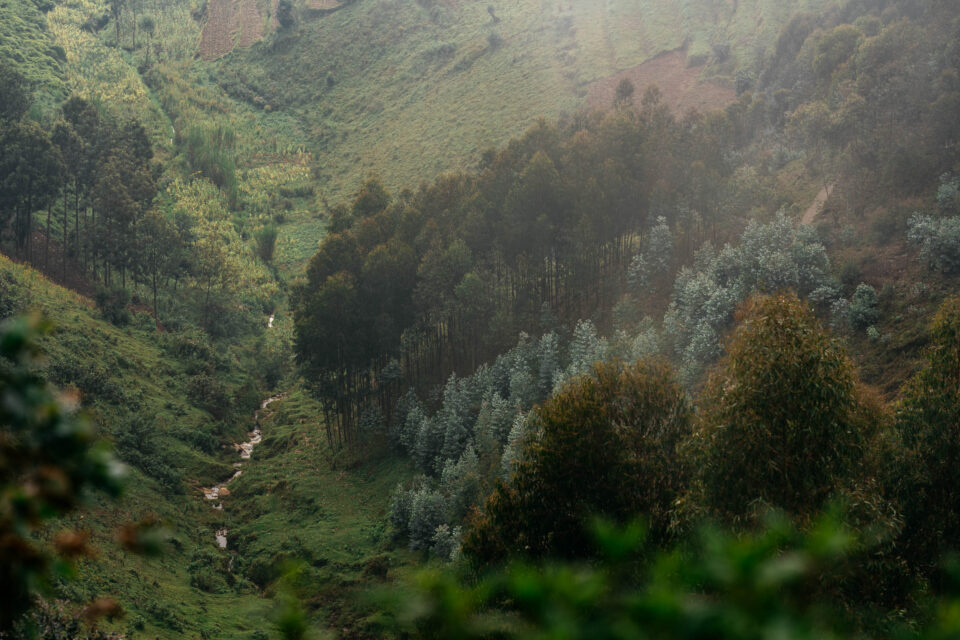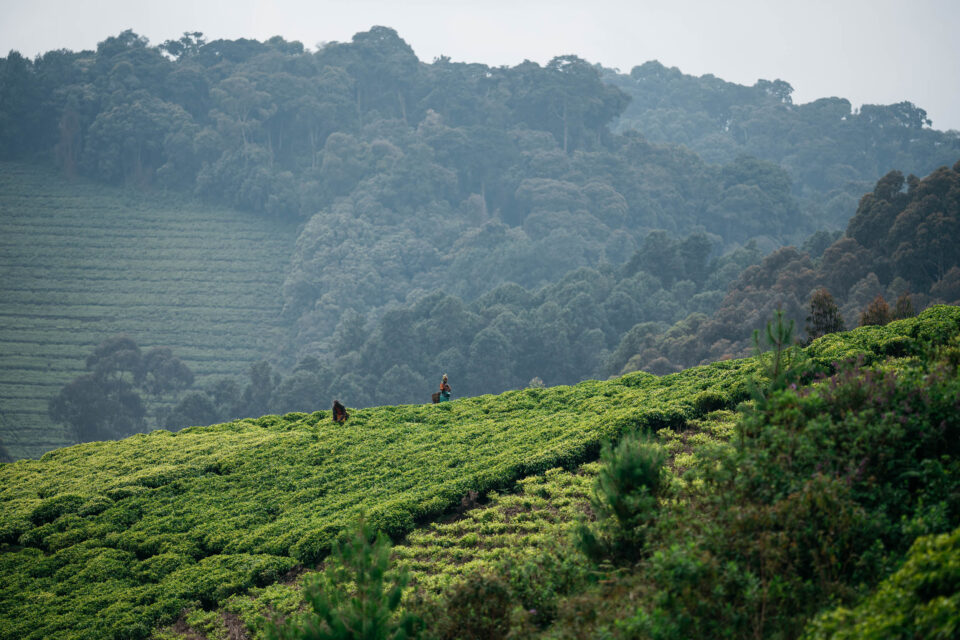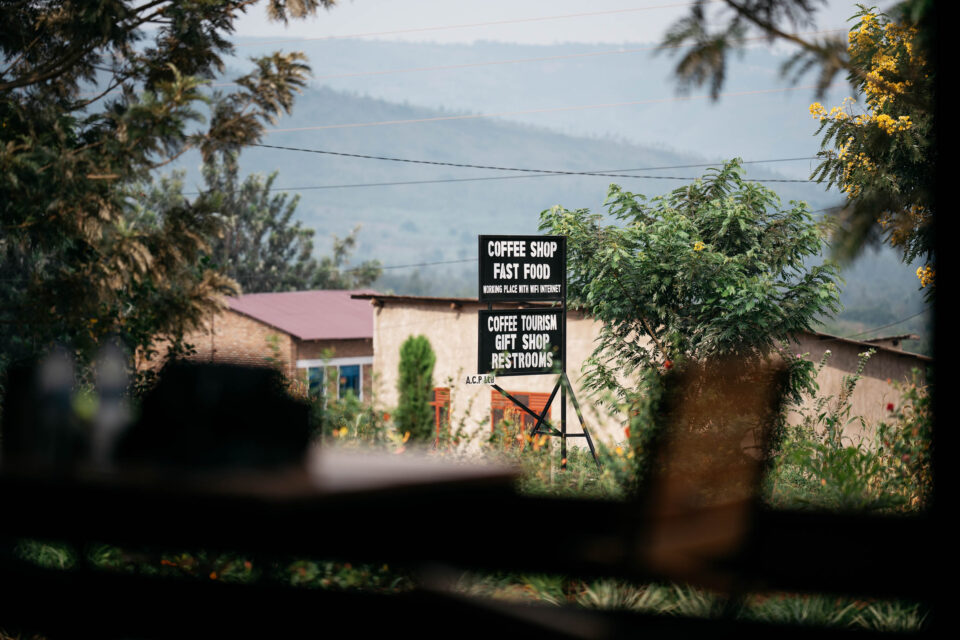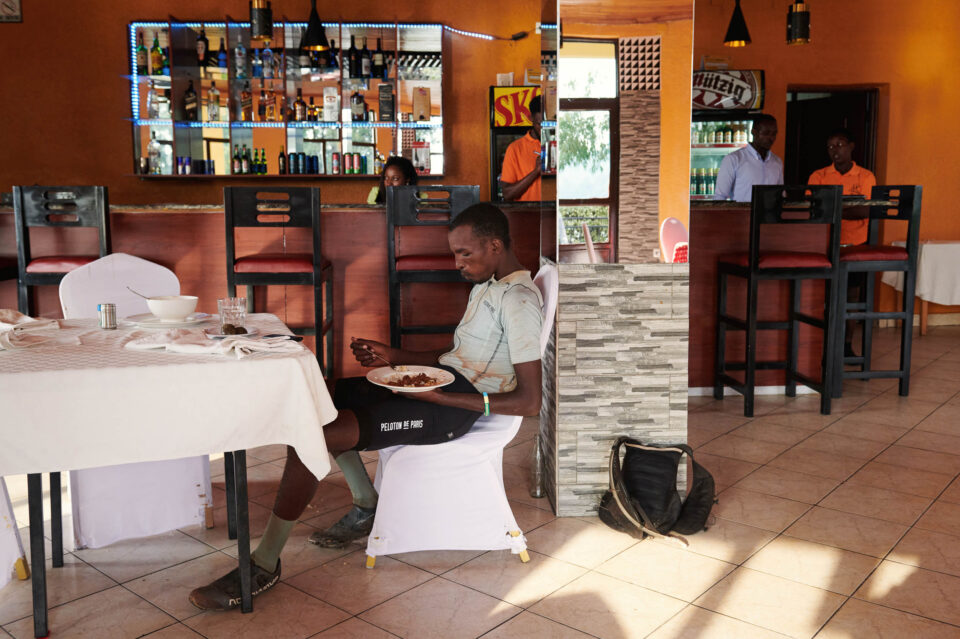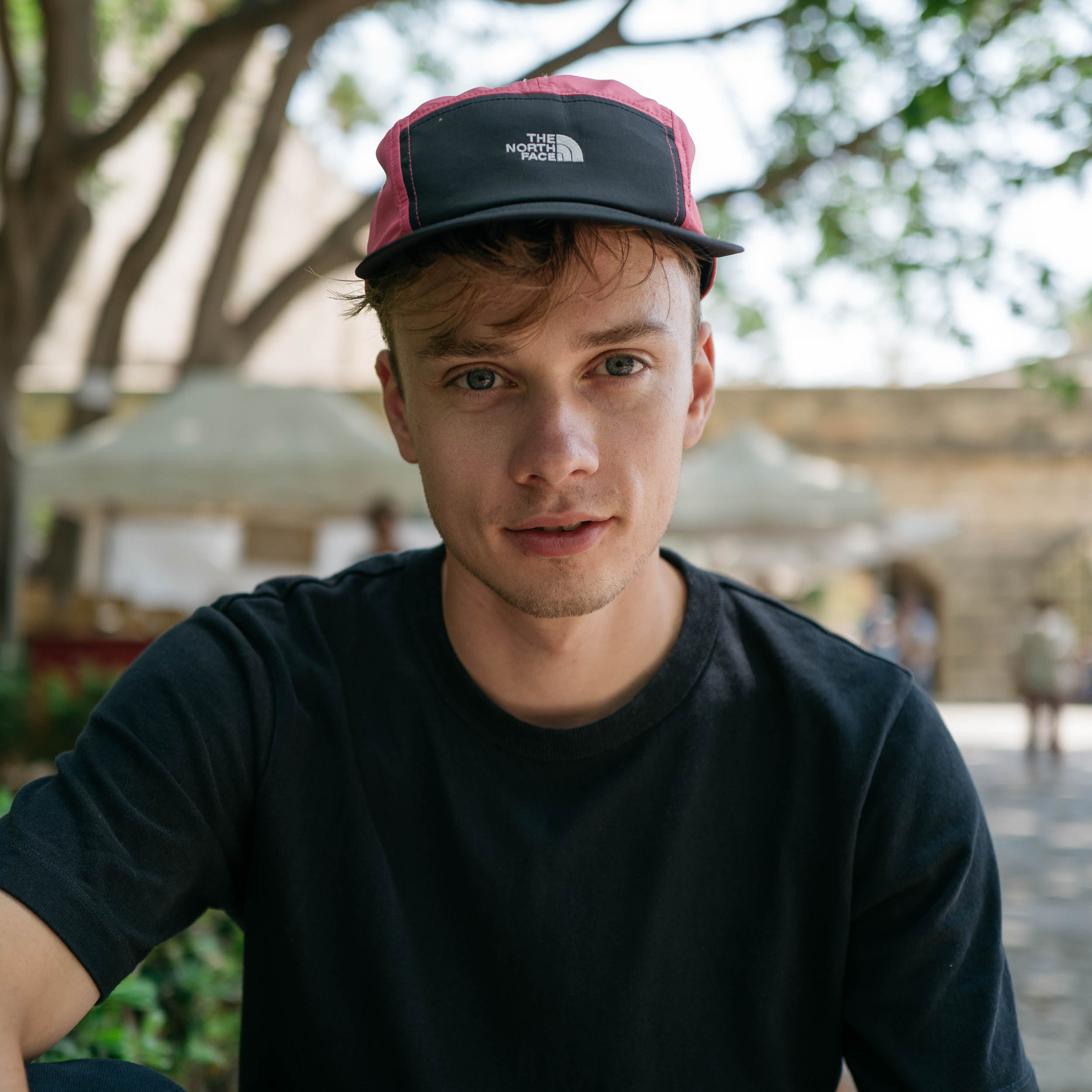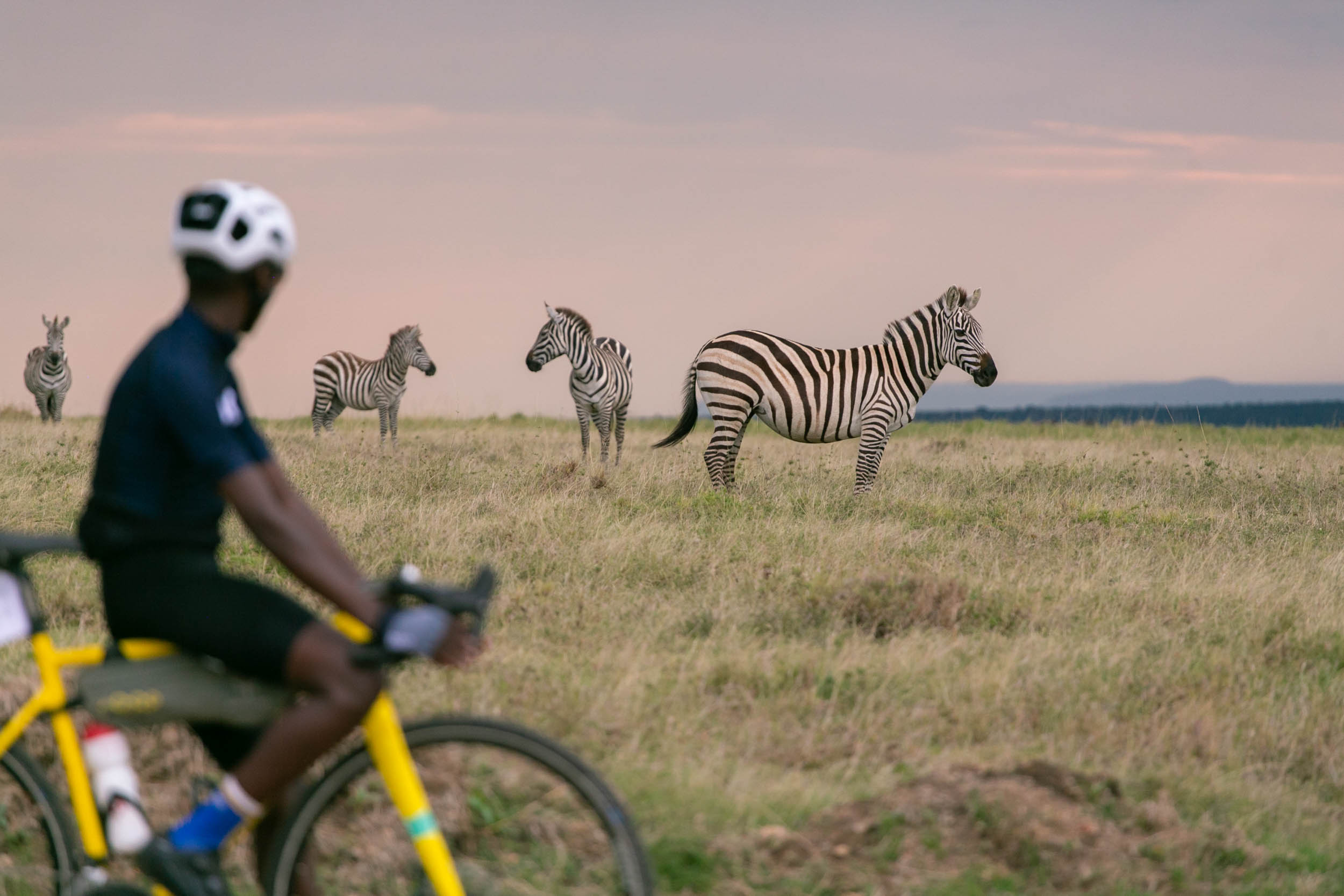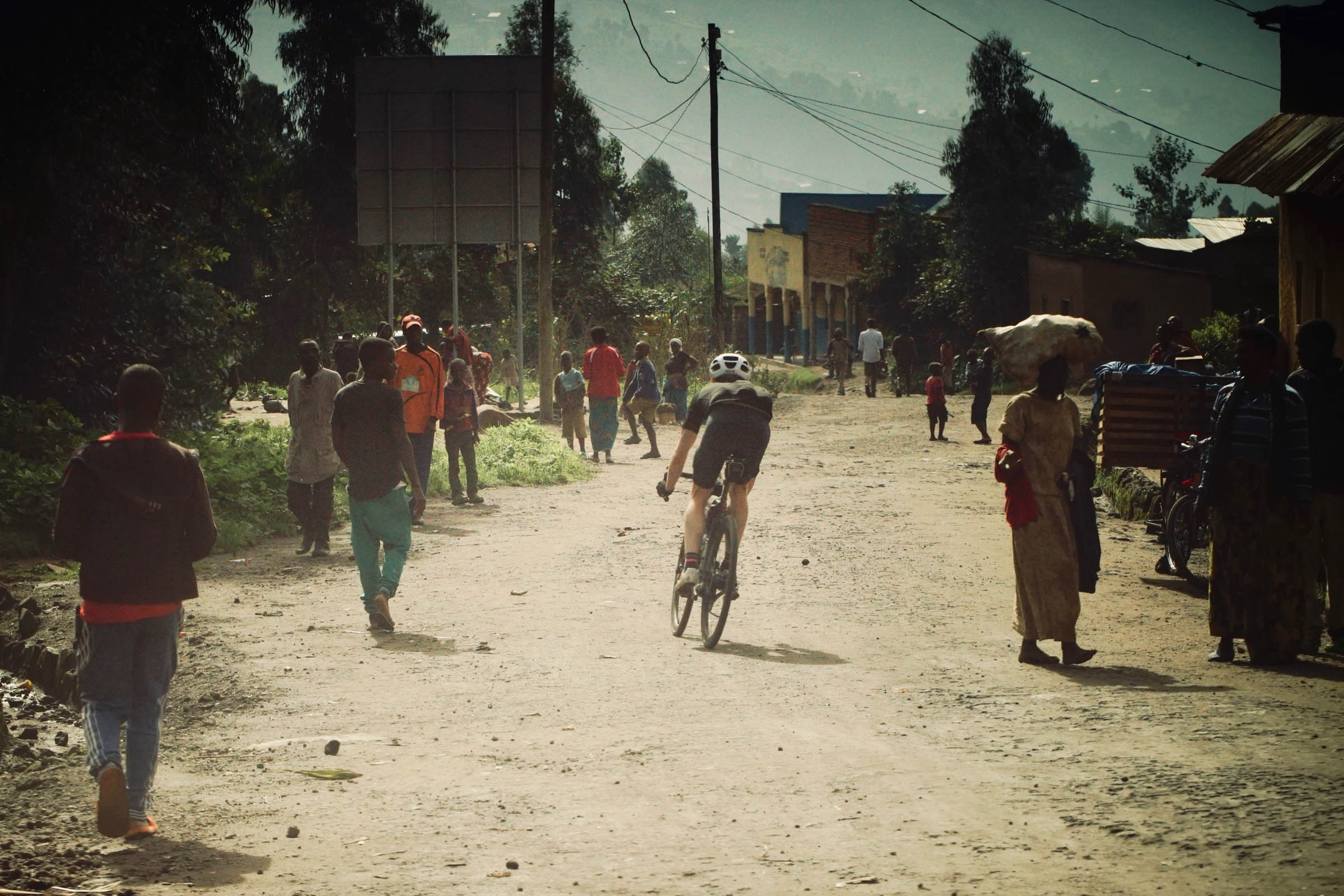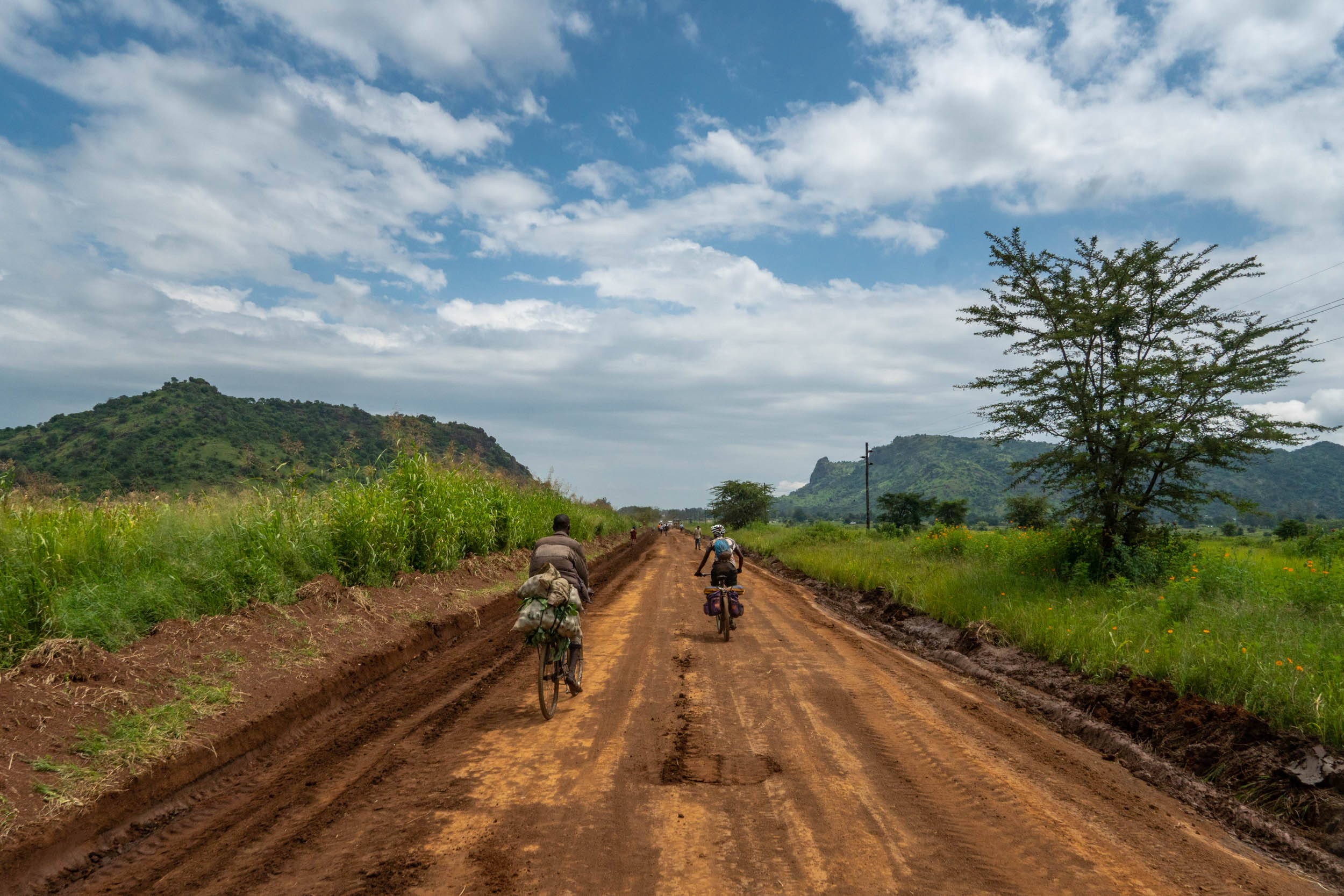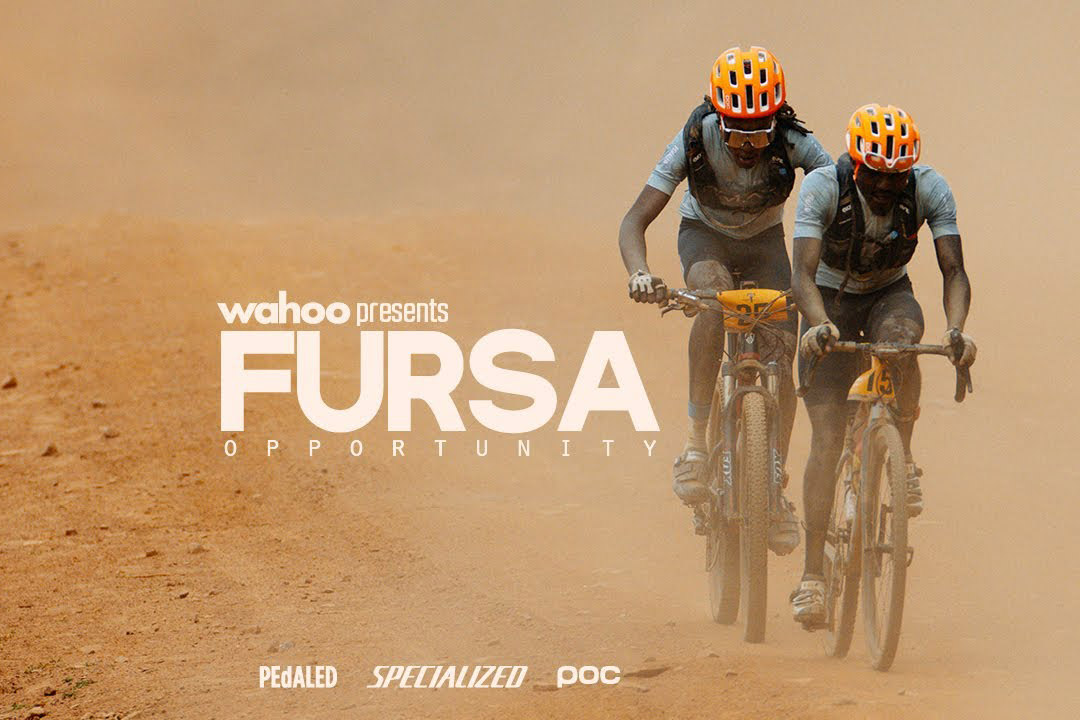Three Takes on the 2023 Race Around Rwanda
Tom Hardie traveled from the UK to east-central Africa to participate in the 2023 Race Around Rwanda this year, where he had a chance to sit down with local racers Dufitumukiza Mussa and Neza Violette. In this piece, Tom shares some impressions from his experience, and the pair of Rwandan riders offer some insights into their unique journeys to the starting line and the changing cycling culture in their country. Find thoughts from all three with additional photos by Matt Grayson here…
PUBLISHED Jun 22, 2023
Words by Tom Hardie, Dufitumukiza Mussa, and Neza Violette; photos by Tom Hardie and Matt Grayson
Just over 100 nervous riders lined up shoulder to shoulder on the concrete ramp of Maguru Bikes and Coffee, a sea of twinkling lights in the dark. It looked like the other ultra races I’d been to, but this was my first time lining up to race myself. I exchanged excited words with the handful of people I’d met before and gave a gentle nod and smile to the Rwandan and Kenyan riders as we locked eyes. It’d be the last I’d see of them until the finish.
Before the police escort rolled out, Matt, one of the race organisers, reminded us why we were there. Their goals with the Race Around Rwanda (RaR) and the Rwanda Beyond programme is to help Rwandans get into the world of cycling and to build the cycling culture that’s one of the key ingredients to fostering and growing new talent.
I’d entered the Race Around Rwanda on a whim after seeing an Instagram post and finding someone to ride it as a pair with me. The idea of riding in East Africa was enough to pique my interest, but committing to riding it with a partner was the nudge I needed to make it to the starting line. Discovering the RaR entry by way of serendipity (if that’s the right word to describe the Instagram Explore algorithm) meant I’d not spent any time understanding what the race was about or the country’s culture, customs, and history. My ignorance meant I’d headed out to Rwanda with grand ideas of finding a story to tell, and it hadn’t even crossed my mind that the story might not be about me or my partner.
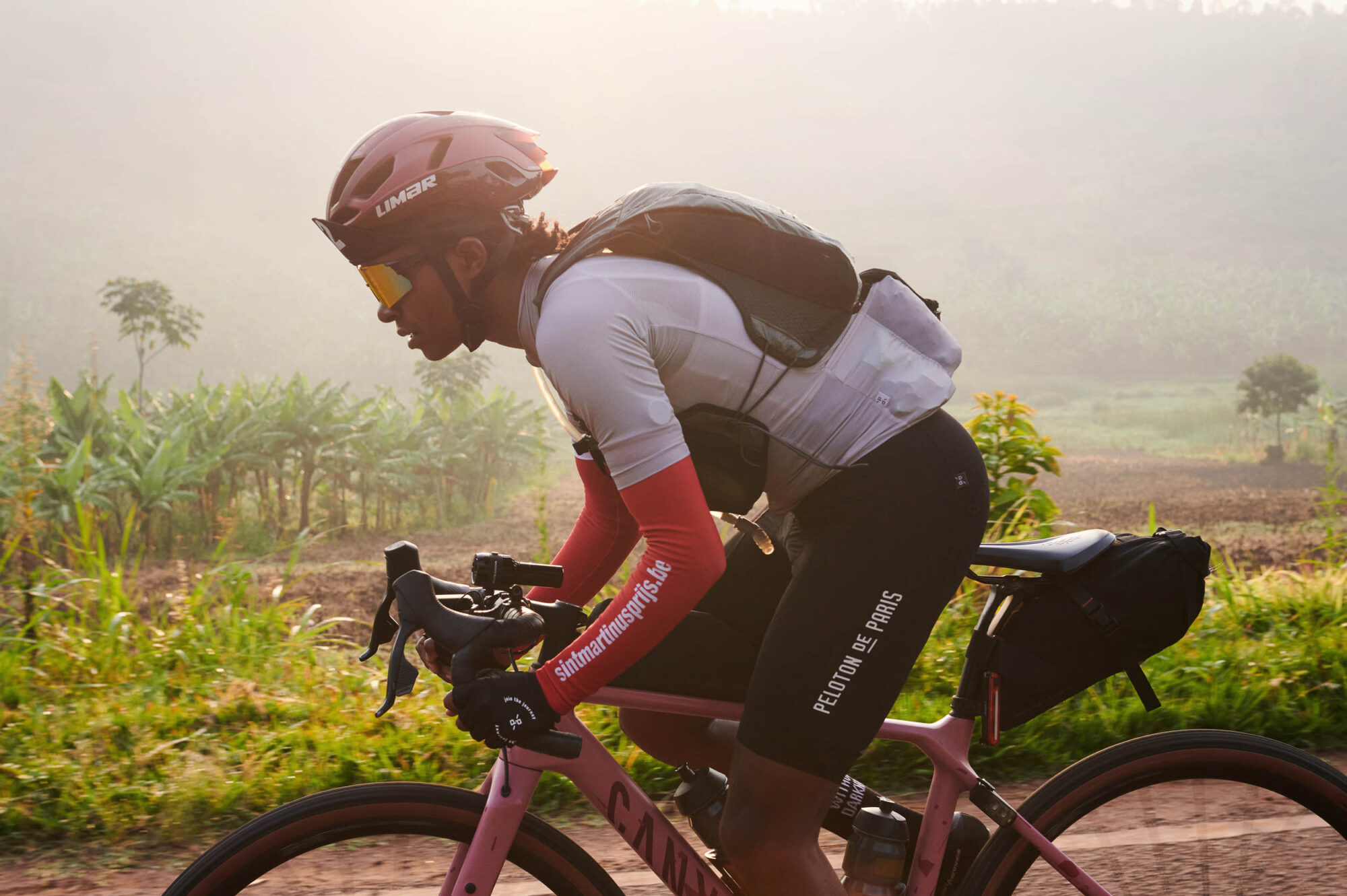
After spending five days riding the 1,000-kilometre route, though, I was clear about what stories I wanted to help share. So, I sat down with two of the Rwandan riders, Dufitumukiza Mussa (Moses) and Neza Violette (Violette), to hear how they’d experienced the race.
Rwanda’s cycling culture
Before we spoke, I didn’t know Violette or Moses, but having spent two weeks in Rwanda, I felt secure in my assumption that their start in cycling would have been quite different from mine. That’s where we started, as I wanted to know how a young Rwanda goes from riding one of the ubiquitous steel singlespeed utility bikes to competing in a 1,000-kilometre gravel ultra race.
I’ll start with Violette’s story, as it’s probably slightly more familiar. She started on the road five years ago and immediately found barriers to progression. Where were the local grassroots races? The cycling clubs and informal mentors? The national cycling federation with clear routes into it, especially for women? Violette reflected on the lack of opportunities on the road, and that’s where her path crossed with the other race organiser, Simon. After they met, he invited her to one of his other events here in Rwanda, the 140-kilometre Gorilla Gravel race. Violette won. She then went on to finish second in the 2022 edition of RaR, and after making it to Europe for the Torino-Nice Rally that same year, she came back to the RaR in 2023 and won.
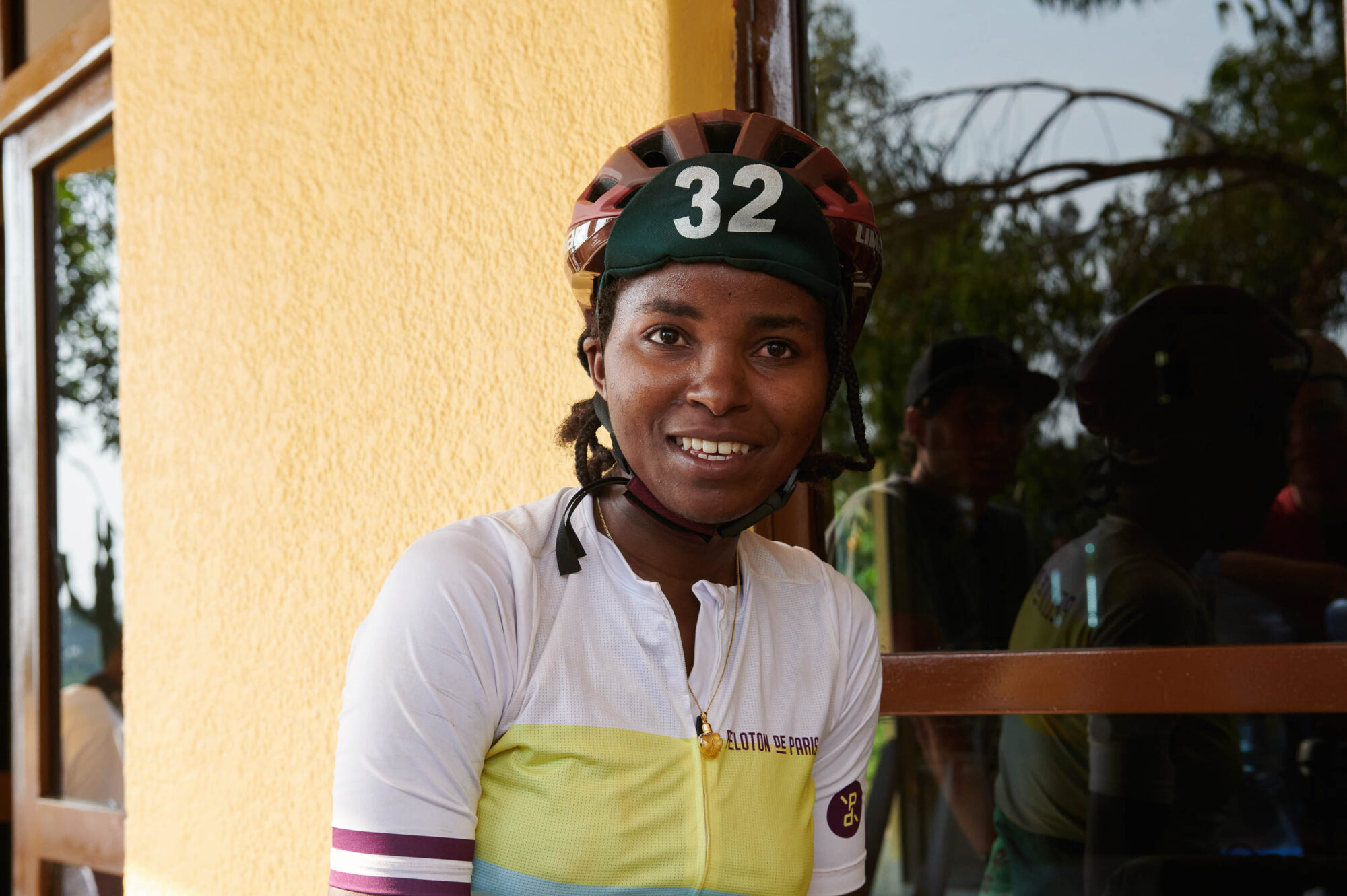
The main thing I took away from this part of my conversation with Violette was just how important and influential access to other experienced riders is to help develop new riders. Whether that’s bringing seasoned bikepackers to Rwanda or, more importantly, creating opportunities for these Rwandan riders to head to Europe and beyond to experience events like the Torino-Nice Rally.
Moses’s story is quite different. I’ll let him tell it in his own words:
“I’m going to go back a little. Growing up, I was passionate about cycling. I grew up where we passed on the way to Checkpoint 1 on the way to Akagera. My parents used to send me to fetch water 15 kilometers, each way, twice a day. So, I was doing almost 60 kilometers a day on a singlespeed bike with five jerry cans, about 100L of water. It was really crazy, but the funny thing was I’d fill the water and do my ride, but then I’d take off the jerry can and ride another 10 kilometers just to enjoy it. Just for fun. Just because I liked it. My parents saw I was crazy about the bike.
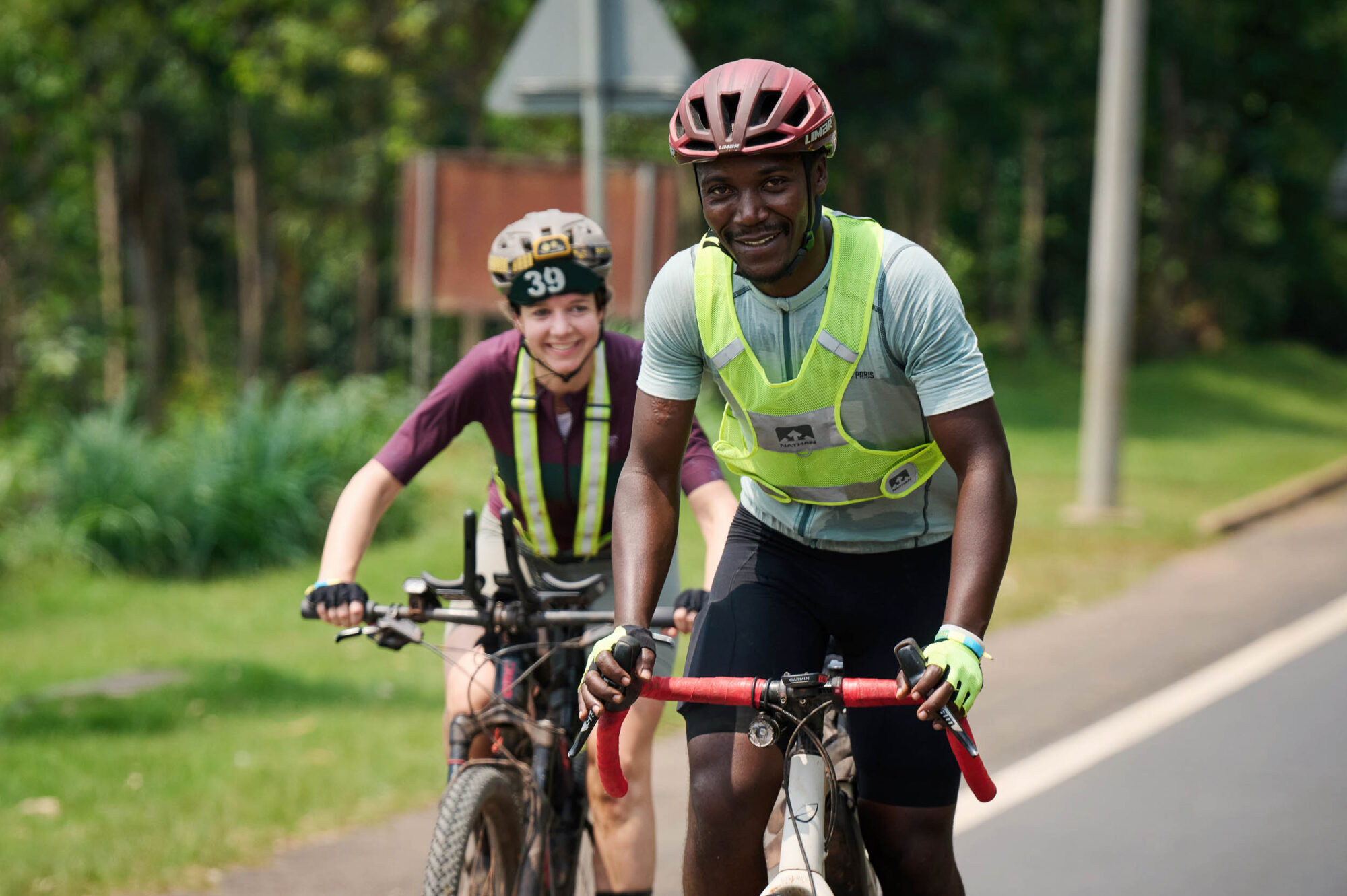
Back then, in around 2004-2005, cycling was very unpopular, so there weren’t many clubs. There wasn’t much cycling, and people were just using bikes for their normal daily jobs. So, when I started living my life, living in a ghetto, that’s where my first ambition was to get a bike. I remember that a friend lent me his bike on my first day there. After that, another kind friend was willing to give me a loan so I could buy a mountain bike and pay him back incrementally. He understood my idea and how passionate about bikes I was, and I’m very grateful for that.
Over time, I saw people on road bikes, and I was like, oh my god, I can’t wait to own that someday. Every time I was riding, I wanted to feel how those riders on the road bikes must have felt. I saved a third of my salary and used it as a downpayment for a road bike, then a second payment later, and I finally had the bike. I took it out on the road, trying to do all the tactics I saw in the Tour and the racing, in the drops, that kind of thing, just to feel the vibe. That’s how I found myself into cycling.”
And that was just Moses’s journey to getting a road bike. He was soon riding more than 100 miles a day, and like many cyclists who’ve started in the last decade, watching GCN videos to learn about training, FTP, cadence, and race tactics. Then, like those who’ve been cycling since before the days of GCN, he took his road bike off-road as his first introduction to gravel riding. He proceeded to reel off a whole host of adventurous stories, from his first gravel ride clocking in at an amazing 330 kilometres, to his 10-kilometre hike through Rwanda’s thick, gloopy mud in his road shoes, before arriving at the Race Around Rwanda start line on his current gravel bike.
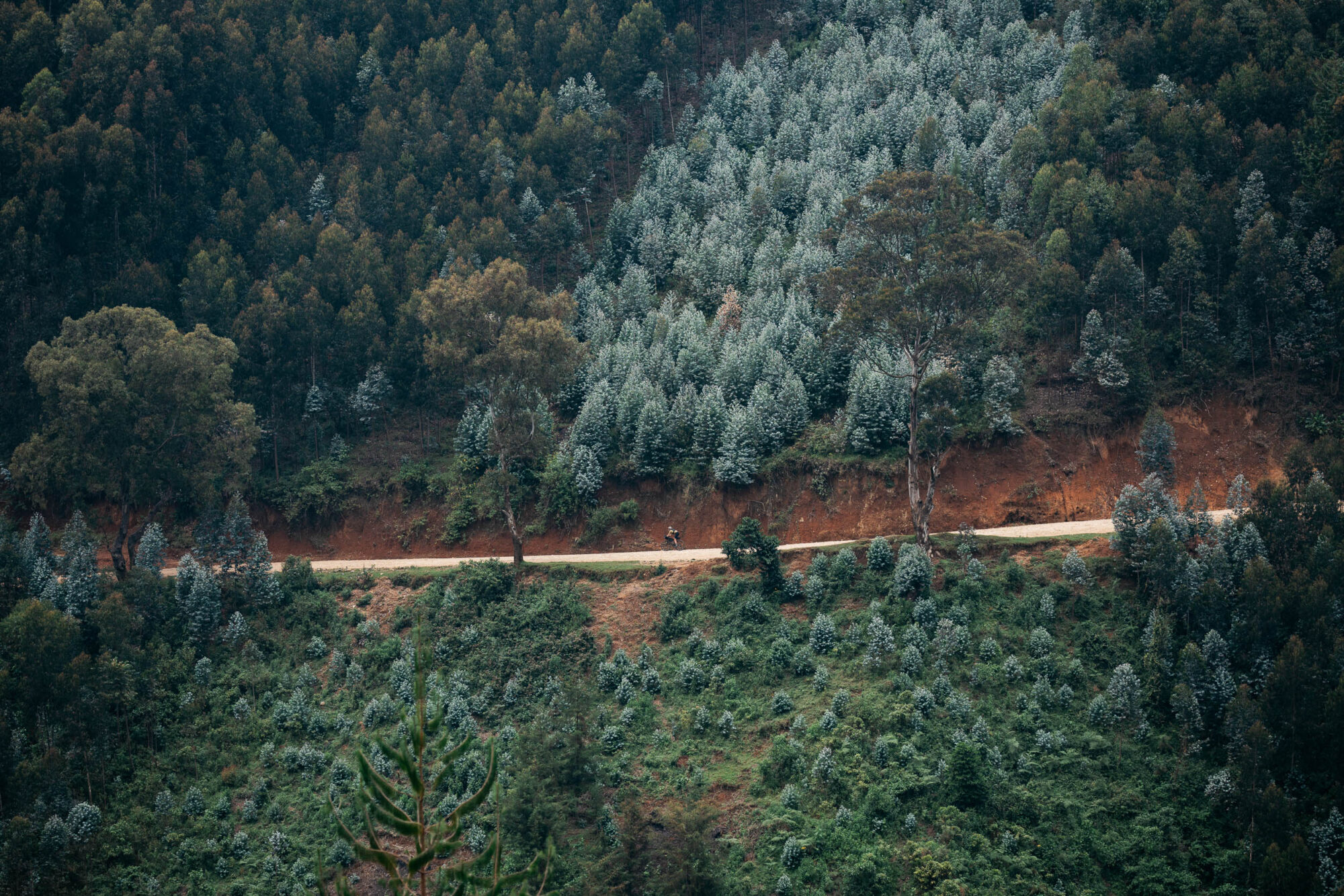
Moses finished the 2023 RaR a day or so up the road from me, but his journey to the start couldn’t have been further away. I have clear and distinctive memories of being allowed to visit my local bike shop to look around as a 10-year-old. I remember the smell of fresh rubber, the squeaky floors, and the dark fluorescent strip lighting. I imagined riding those bikes around the skate park at the bottom of our road. The ramps were so steep and so tall. It felt so far away and unobtainable like I’d never get my own “proper” bike. Yet, for me, my gateway into cycling was just a summer of shifts in the local workshop, a comparative stone’s throw away.
At risk of using up my cliche allowance at the very start of this read, I’m going to quote everyone’s favourite Texan: It’s Not [just] About the Bike. In the UK, where I live, you might get the odd raised eyebrow for pulling on lycra at the weekend, but post-2012 Olympics and Bradley Wiggins, cycling is very much in the public consciousness and an accepted leisure activity. It’s not the same in Rwanda, particularly for women. When I asked Violette how people around her react when she explains why she cycles, she said, “Most of them don’t like it. They think it’s hard to do gravel cycling. They don’t understand suffering, and they don’t understand why I don’t do paved roads. They think it’s more dangerous and technical.”
When cycling’s used primarily for transport, and tarmac roads are a luxury, not a given, it’s hardly surprising that those around Violette don’t understand why she’s chosen to race 1,000 kilometres continuously, specifically seeking out the difficult way through the mountains and off the paved roads. “It’s only the tourists you find on the gravel roads,” she adds.
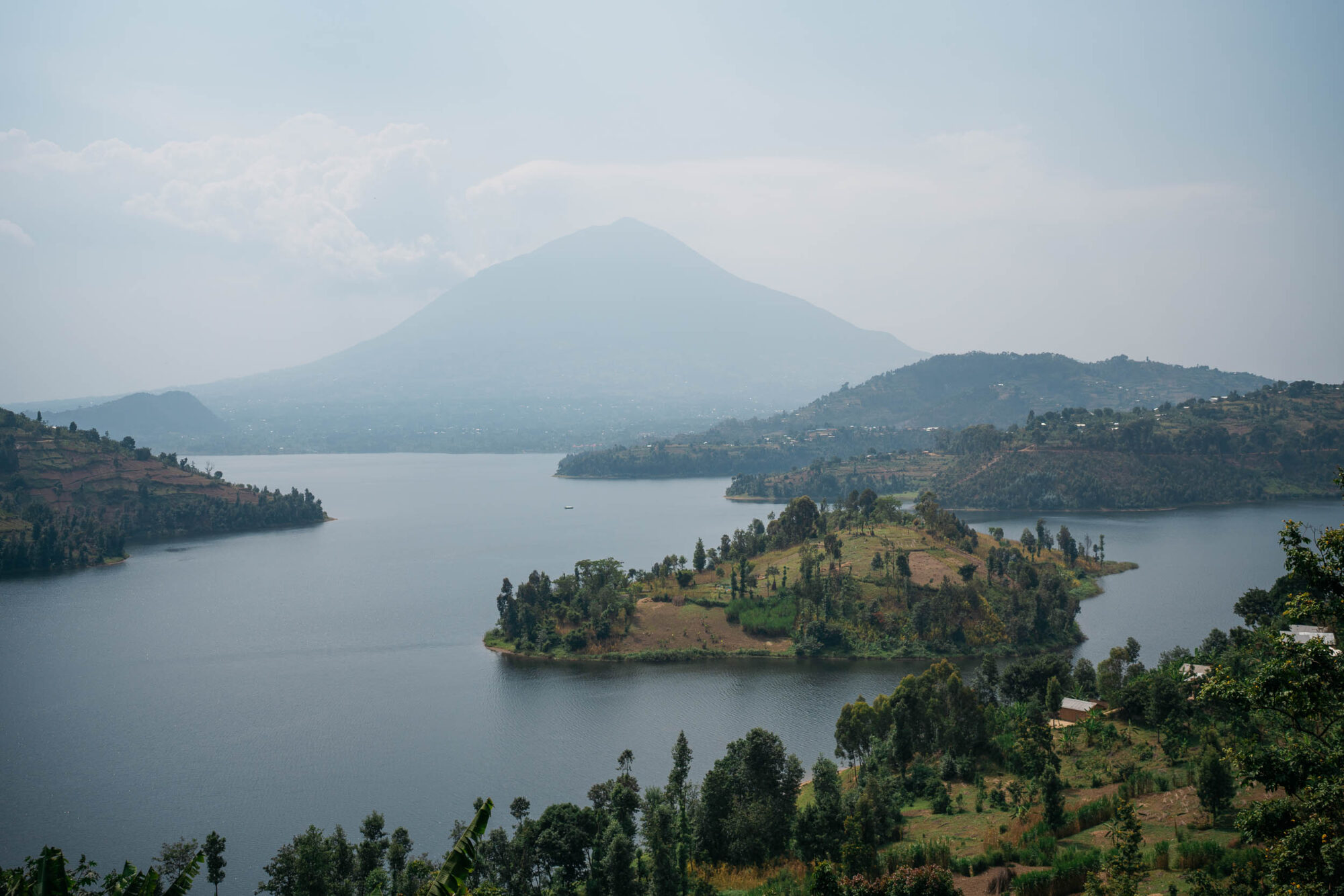
The people of Rwanda
When talking about their experiences in the race, the first thing I turned to was the people of Rwanda. I’d not expected the country to be so densely populated. I’m not sure I’ve travelled anywhere less remote. People lined almost every road we were on. Schools, homes, and farms were all built directly at the side of the road, and villages sprawled along the road rather than backwards into suburbs. What’s more, most people were walking or cycling as they went about their daily business, so even when there are no buildings, the streets are still teeming with people, alive with activity.
I spent most of my riding hours waving hello and shouting “Mwaramutse!” or flicking my eyebrows and head, as is customary. It was novel for the first day or so but soon became as tiring as the cycling itself. Being towards the back of the race also meant most of the people we were seeing had already seen a bunch of cyclists passing through before, so I was curious how Moses and Violette experienced these interactions as they were both much further ahead in the race, and I also wondered how they were received as Rwandans.
Did I get special attention, curiosity, and greetings as a white visitor? And what did the people really think of cyclists riding through their villages and farmsteads, having travelled from across the globe on very expensive bicycles?
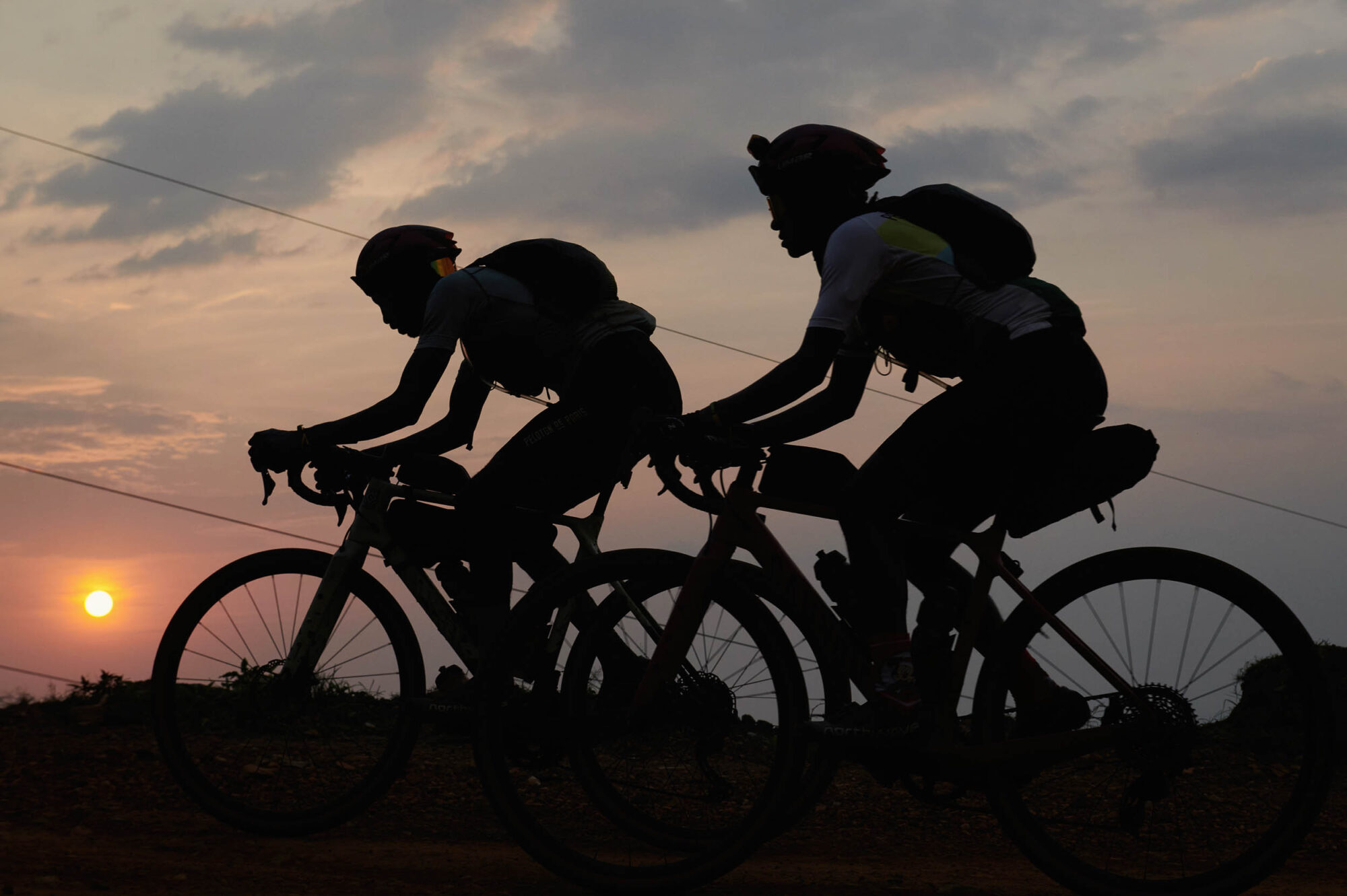
Moses, Violette, and I all heard the same thing shouted at us as we approached from a distance: “Mzungu!” Violette explained to me that whenever locals see someone on a bike, they just assume it’s a white person. “I think the best thing to them was seeing a girl on a bike, especially a black one, because when they see a bike coming they are like, ‘It’s just white men and women.’ But when I cycle past, I was the first girl, and they were like: ‘Oh, it’s a girl!’ Some of them didn’t believe I was a woman, and it was a surprise to them.”
Violette also seemed to experience the same thing I did: universal friendliness and greetings from everyone. She told me, “They were clapping a lot. I was concentrated, but when they were shouting and clapping, it added to my motivation.” Moses said the same, that people gave him courage and told him to stay strong, giving him motivation throughout.
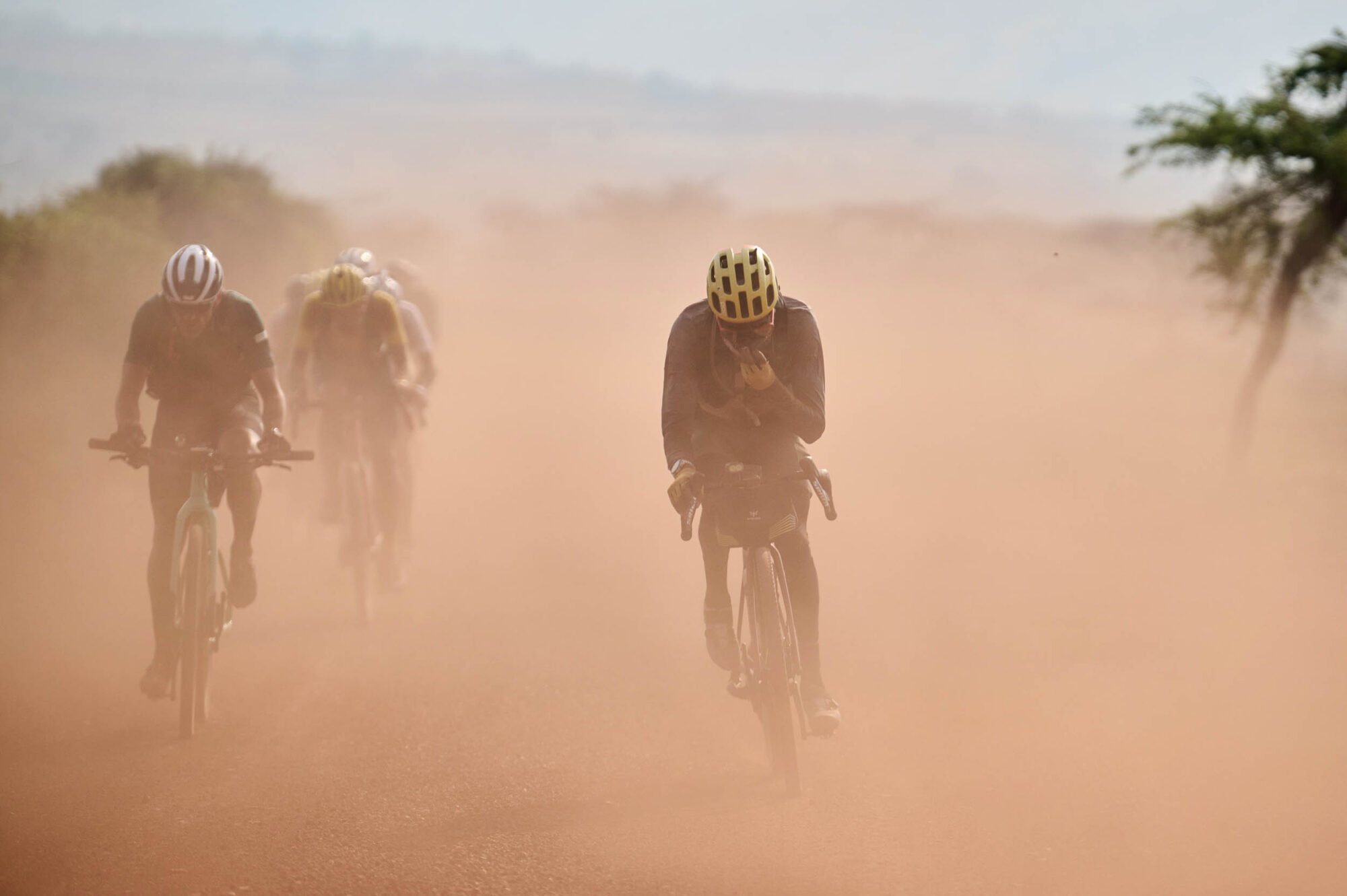
Race Impressions
If Moses’s story to get to the Race Around Rwanda wasn’t already filled with enough trials and tribulations, a personal moment he shared with me during our chat cemented just how challenging his route to the startling line was. He had two close family members pass away in the week before the race. “That really made me feel not okay mentally, and I had a lot of orders for my energy bars [Moses runs his own energy bar company, imBARaga, using his experience as a chef and nutrition education to bring high-density energy products, the first of its kind in Rwanda]. Because of these losses, I couldn’t train, and I couldn’t eat either. I also wasn’t prepared mentally,” he said.
Once on the route, he faced challenges that will be more universally recognisable to anyone who’s followed or ridden these events before.
“Instead of taking the right turn, I took the left turn for about five kilometers. Then you know, I had that instinctive feeling that no one passed here, then I looked for tyres, and there were no tyre tracks. There was no one. I asked a local at the side of the road if he’d seen any cyclists passing, and he said no. When I got back, I found all the people I’d just dropped were now in front of me by nearly two kilometers. At that moment, I felt angry at myself, but I knew I couldn’t let it get to me. If I did, there were far bigger challenges that would destroy me. I was riding with a woman, and she saw me struggling mentally. ‘Ignore the pain, ignore the fatigue. Just focus on the road,’ she told me.”
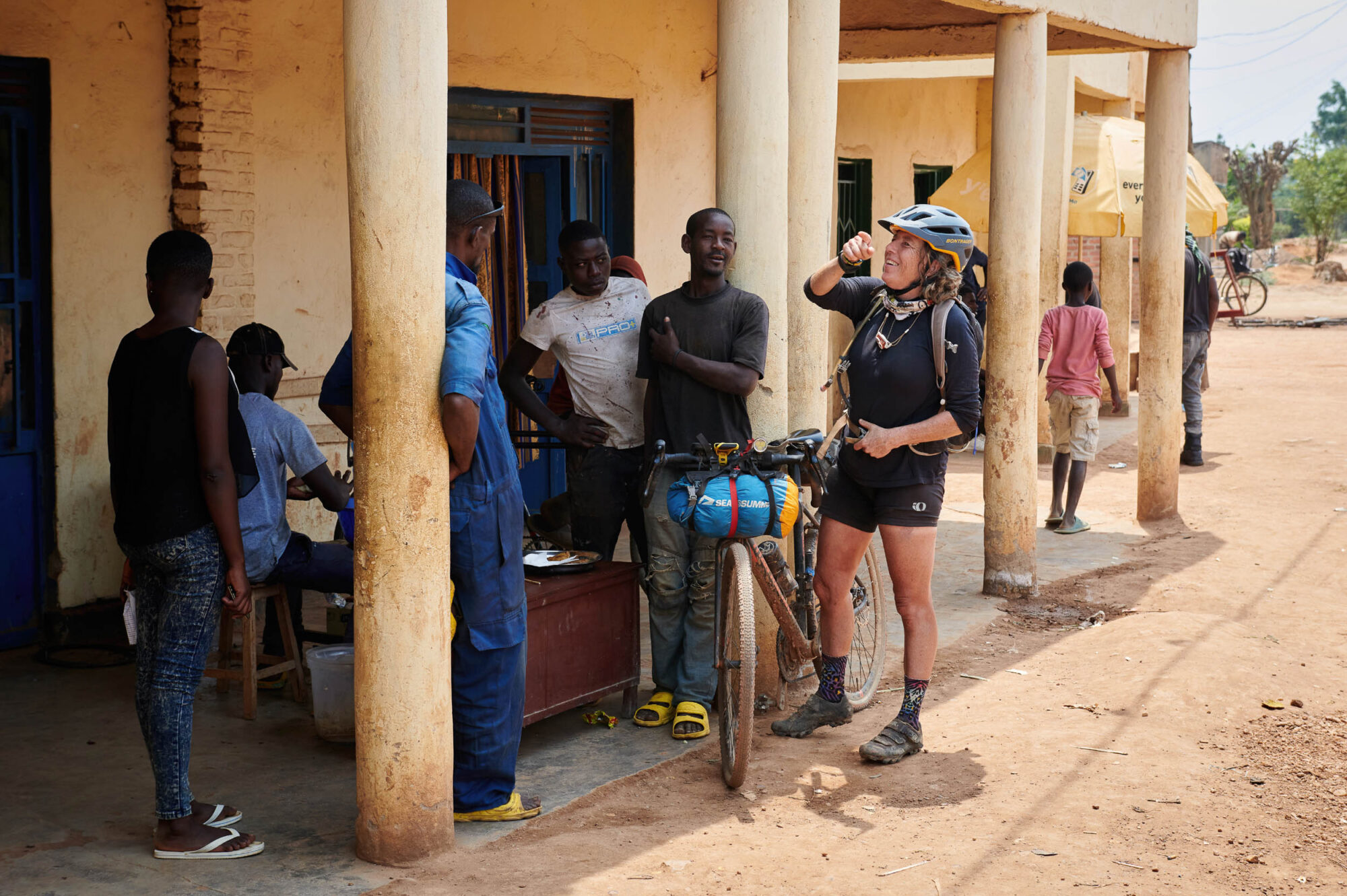
And Violetta? She won the race, that’s no secret. What I was interested to hear was what she thought her secret to success was:
“I think to focus on what you’re doing, be passionate, and use mental strength. Nothing more than that. From the beginning to the end, if you’re not thinking positively, there’s a risk you’ll give up. When you think you’re tired and thinking you want to give up, you’ll do that. But when it’s hard and you’re thinking you’re going to fight until the finish, you’ll succeed. What you think and say in your mind, is what you’ll do. From the start until the finish, I was keeping myself positive. I didn’t think of the negative things.”
Violette also had her fair share of typical ultra-cycling challenges. After getting stuck in Rwanda’s notorious peanut butter mud with a puncture, the wheel was so thick with dirt it wouldn’t turn, and her brake pads remained stuck engaged all the way to Kigali despite trying to pry them open with a tyre lever. Wheeling her bike around as I was setting up for our interview, I was surprised at how firmly shut that rear caliper was. She wasn’t exaggerating.
Violette also reflected on her position in the race and how that affected her ride.
“I was chasing the boys. I wish I had a girl to compete with. I hope we’ll have lots of girls of different levels in the next race. If I can have women around me, I think it’d help me to push harder. When I see guys around me, it’s not the same, as it feels like a different race. But I enjoyed it, and I had a lot of fun all the way to the finish line.”
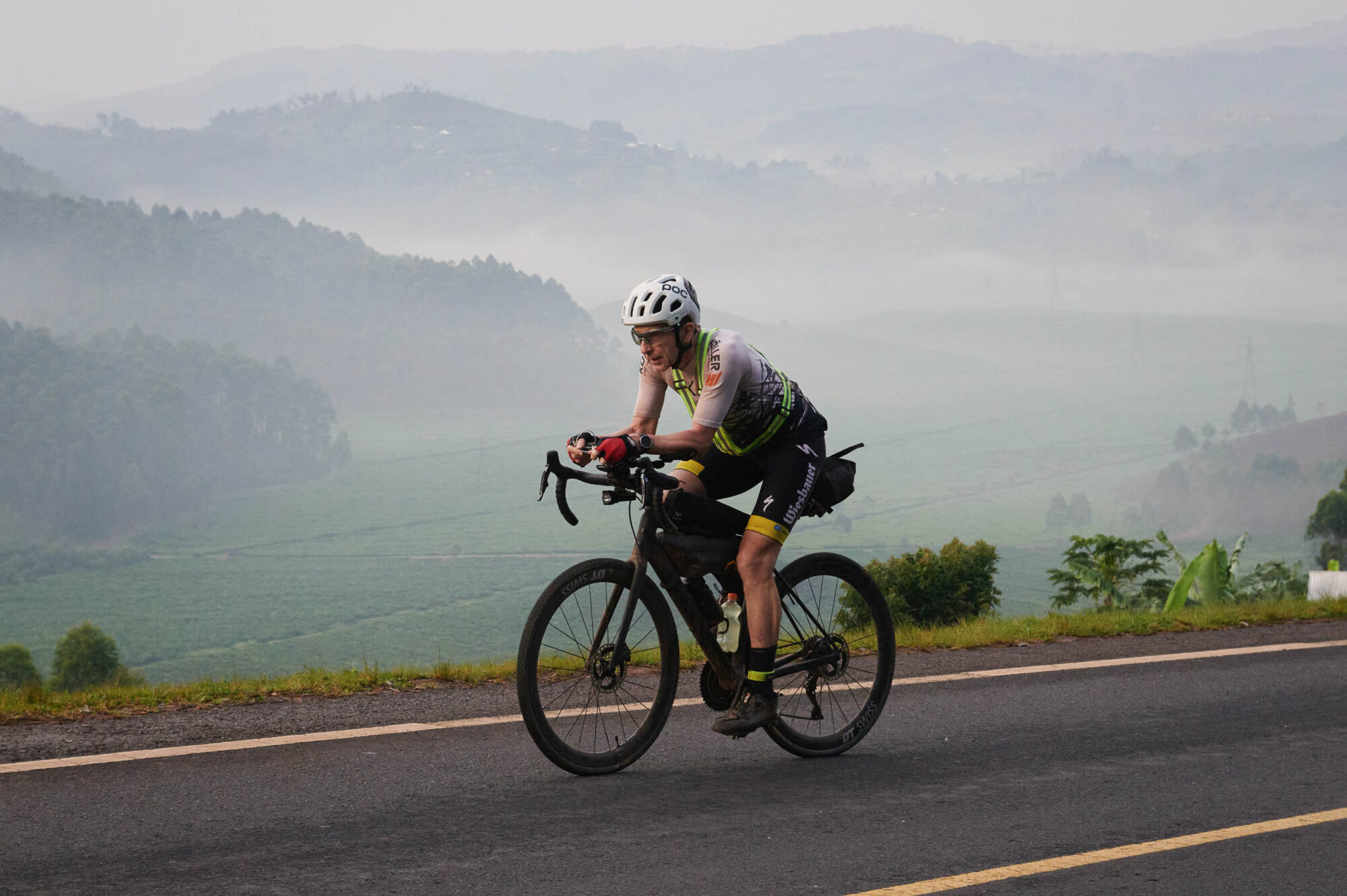
A Message to Readers
As a natural conclusion of our conversation, I was curious what Violette’s message to the readers of BIKEPACKING.com would be.
“I recommend they come. Rwanda is a safe country, a nice country to ride a bike. It is a mountainous place with a thousand hills, so be ready for the climbs in the Heart of Africa. And train hard, because next year, I’ll have more experience. I will be waiting here for you all, and it will a lot of energy to beat me! It would be nice to have 50/50 men and women. I’d be very happy for it. I want to inspire as many women as possible. So, if you think you can do it, do it. Let’s come together and inspire other women to do the same.”
Moses left me with a similar call to action. He asked me to tell people about my experiences in Rwanda. In his words, “It’s a beautiful, unique, and safe country. Not too hot, not too wet, with amazing tarmac and gravel roads that are better than anything else you’ll find in East Africa. Bring a bike, you won’t be disappointed!”
My conversations with Moses and Violette will be published on the More Stories Tomorrow podcast if you’d like to hear what we discussed in more detail.
Related Content
Make sure to dig into these related articles for more info...
Please keep the conversation civil, constructive, and inclusive, or your comment will be removed.







